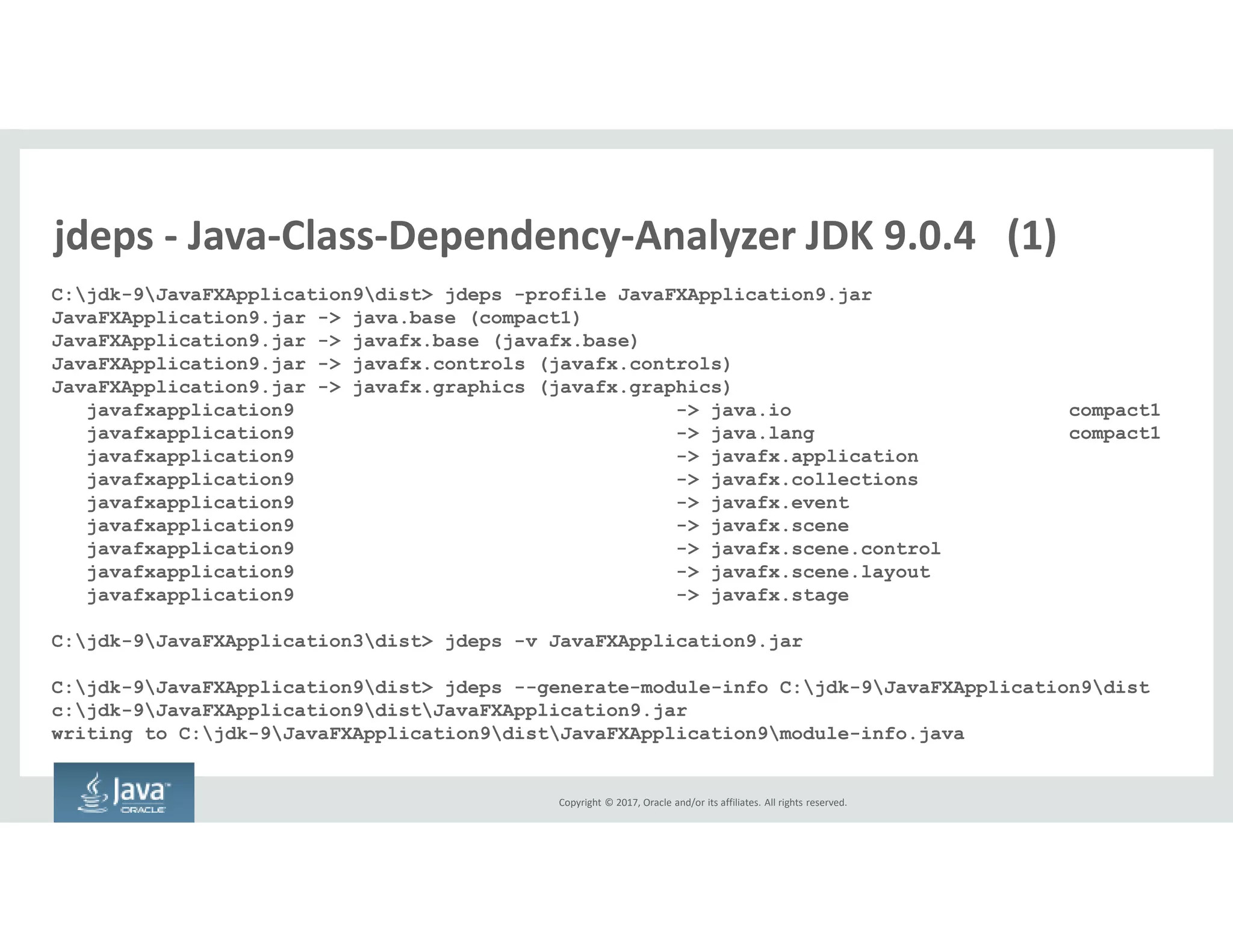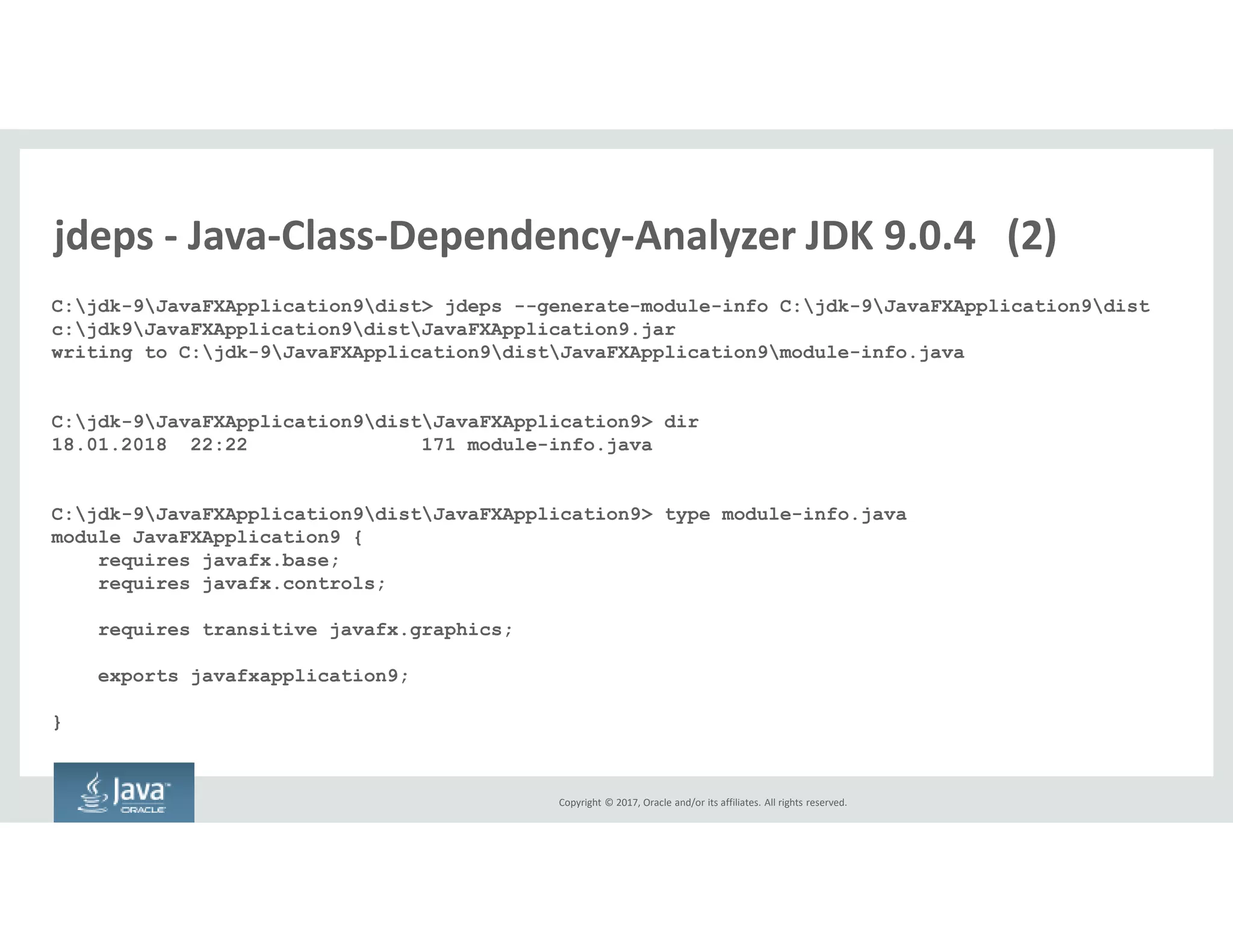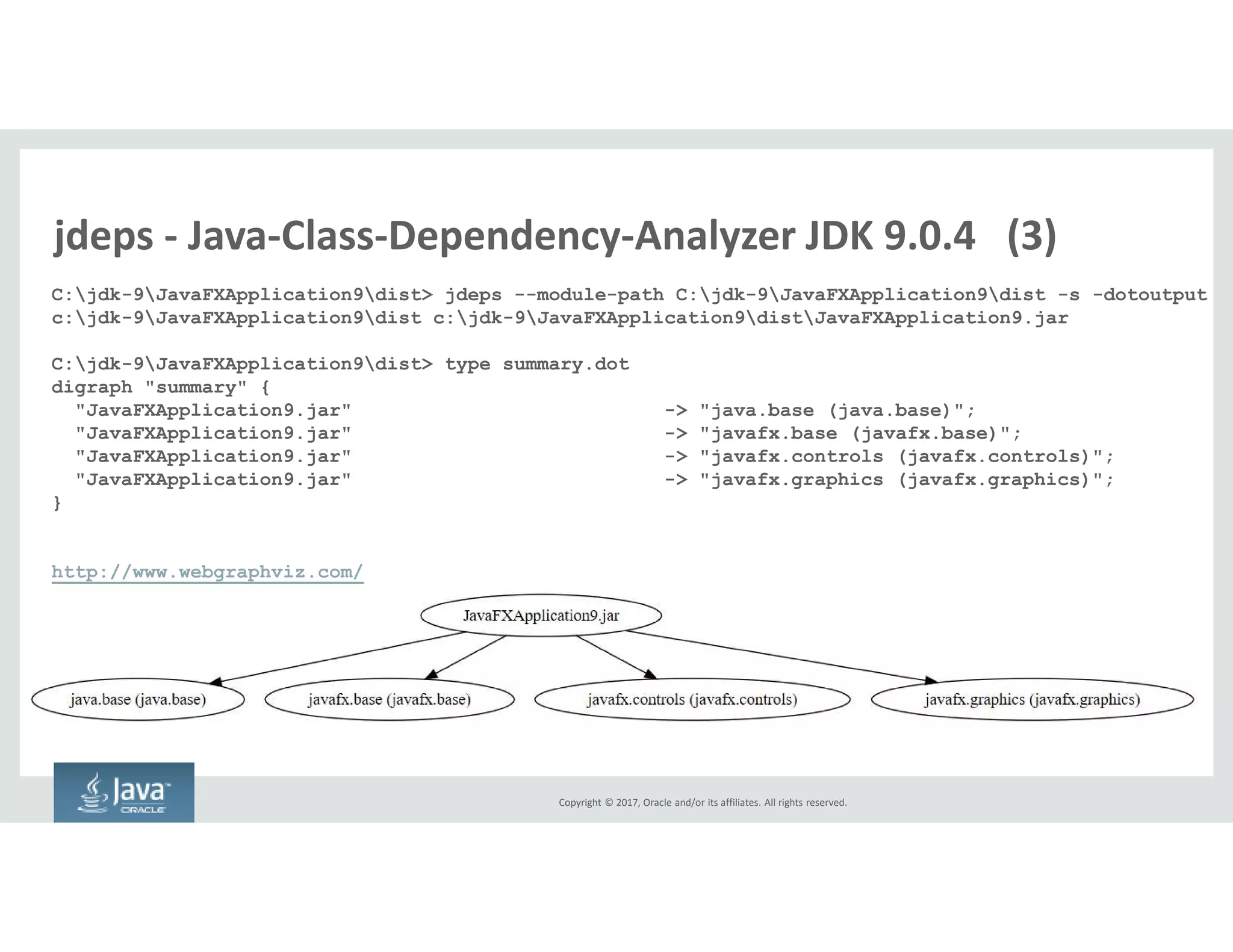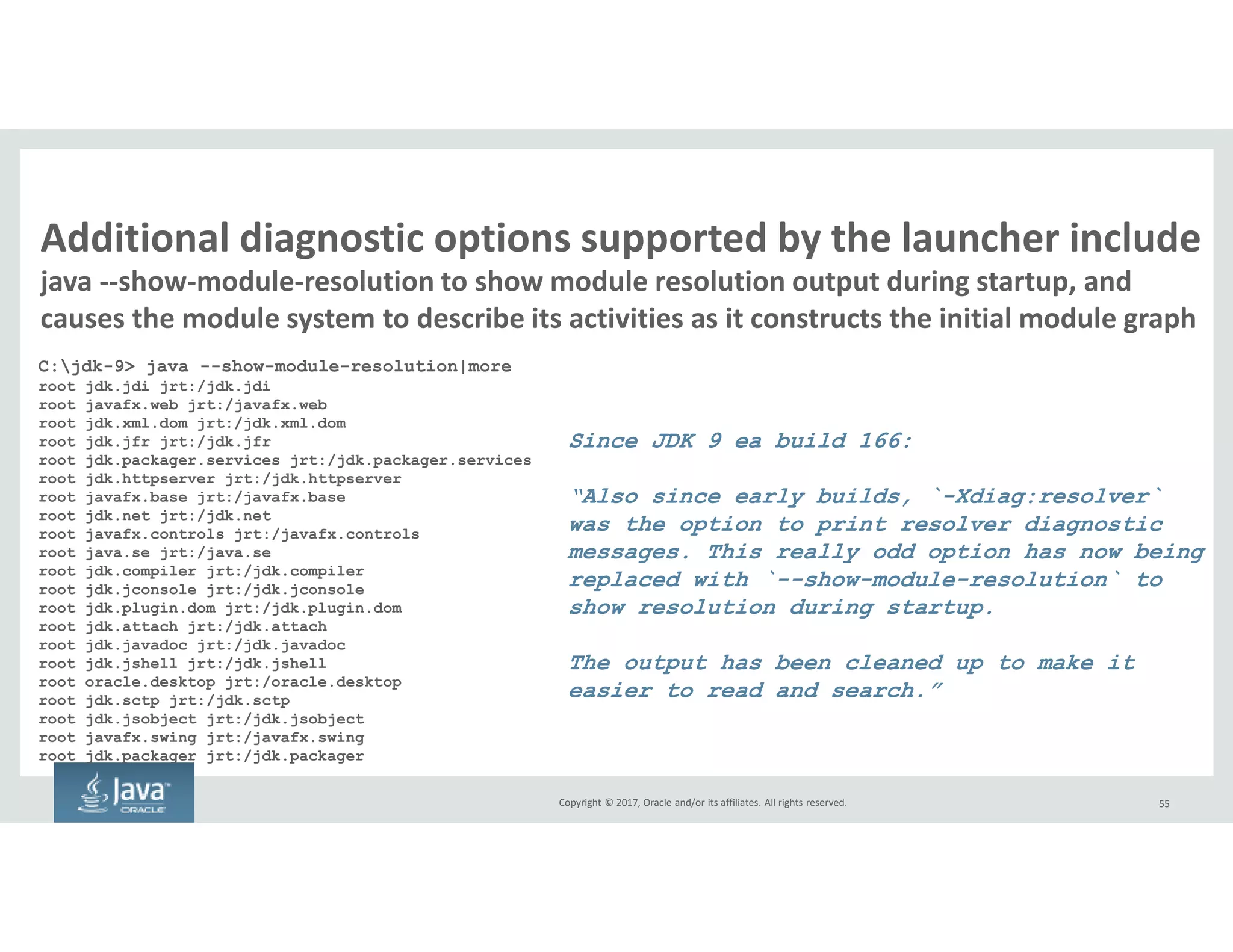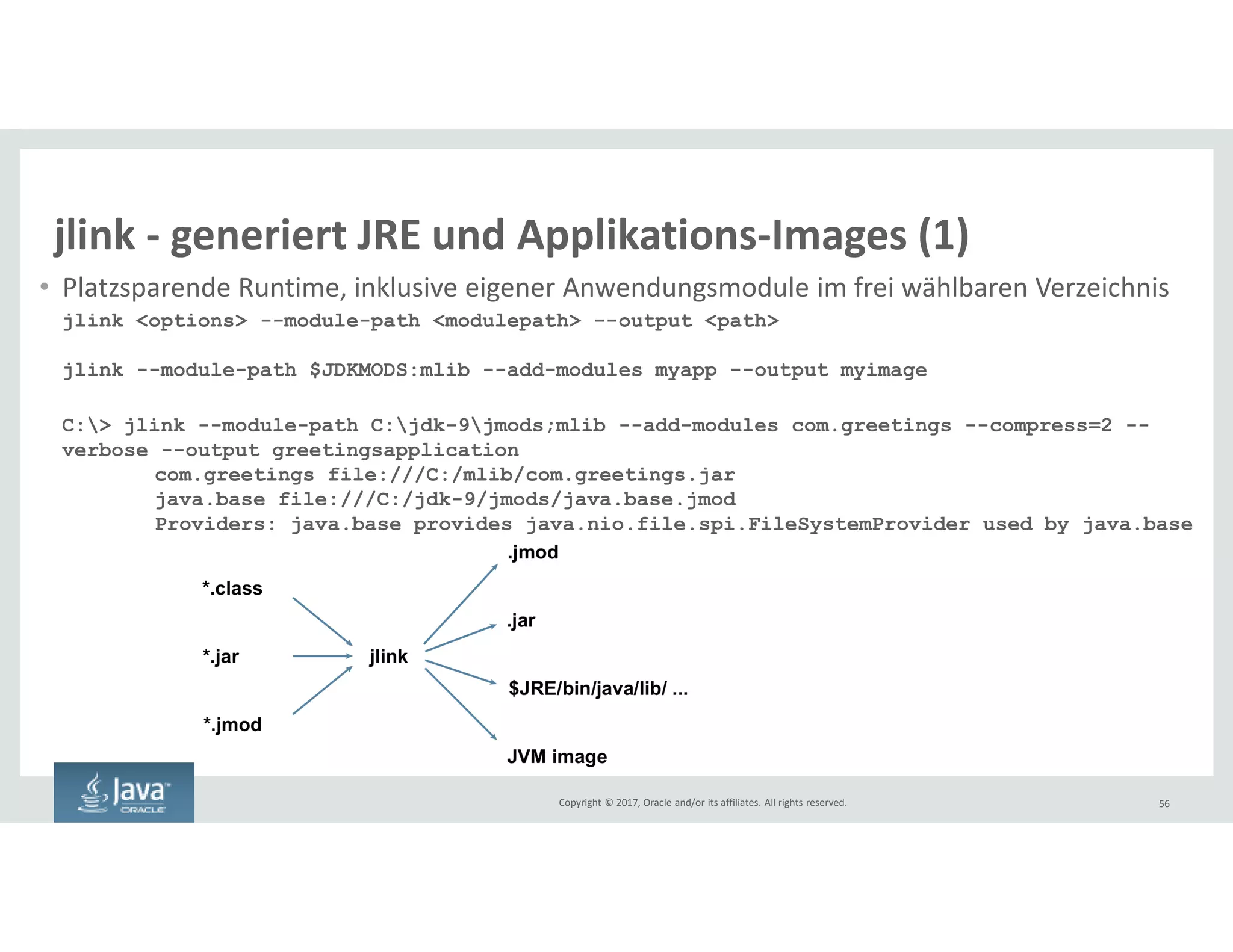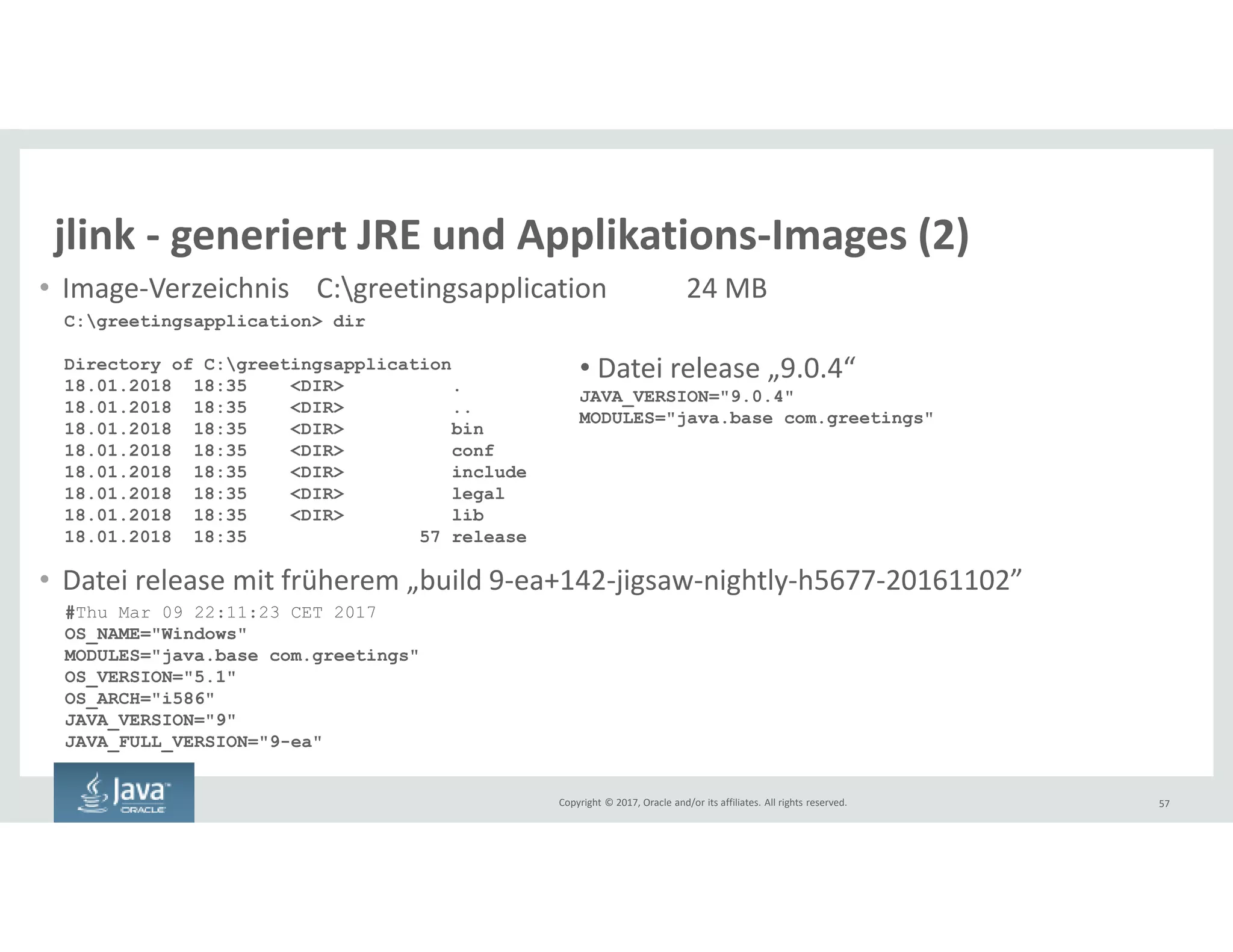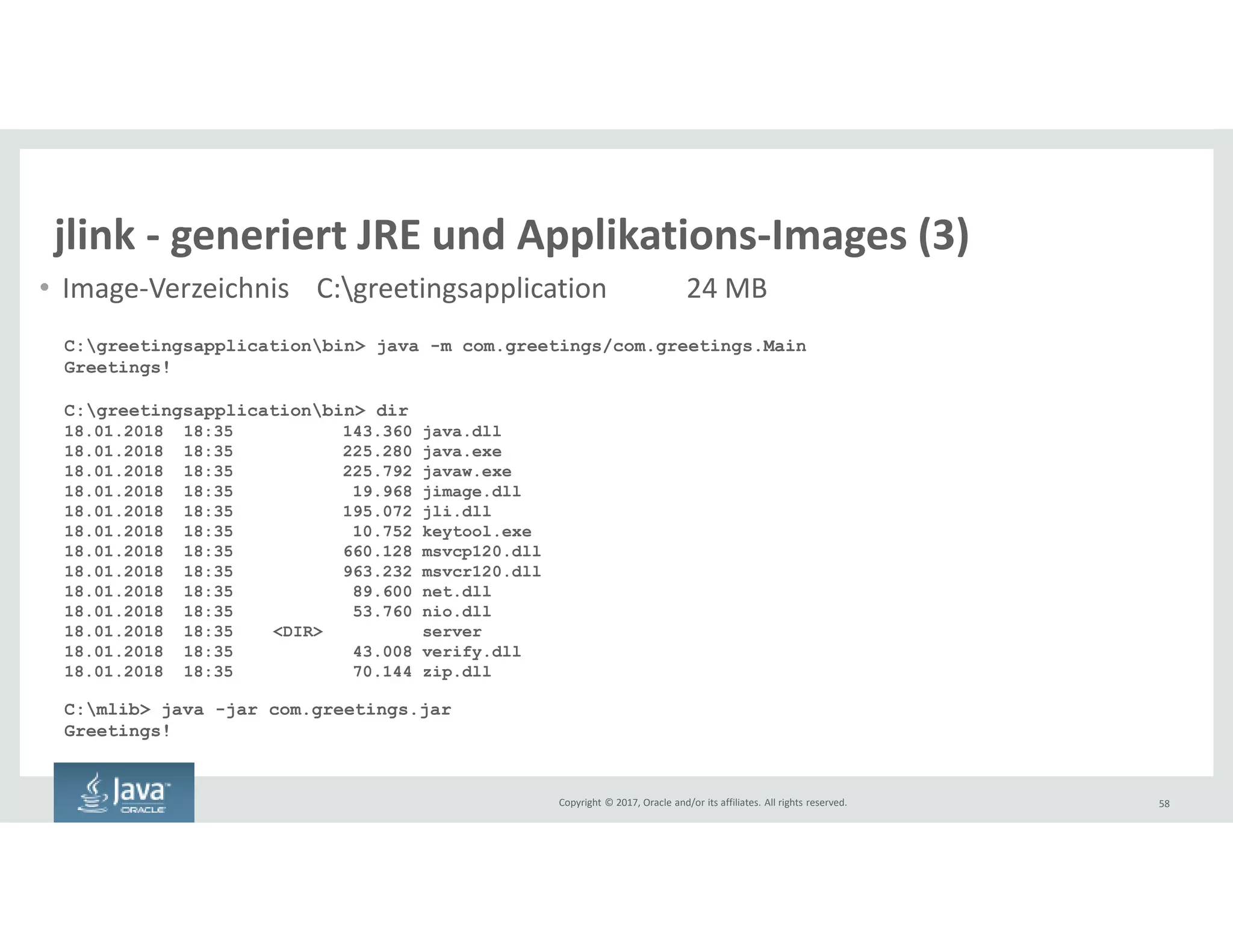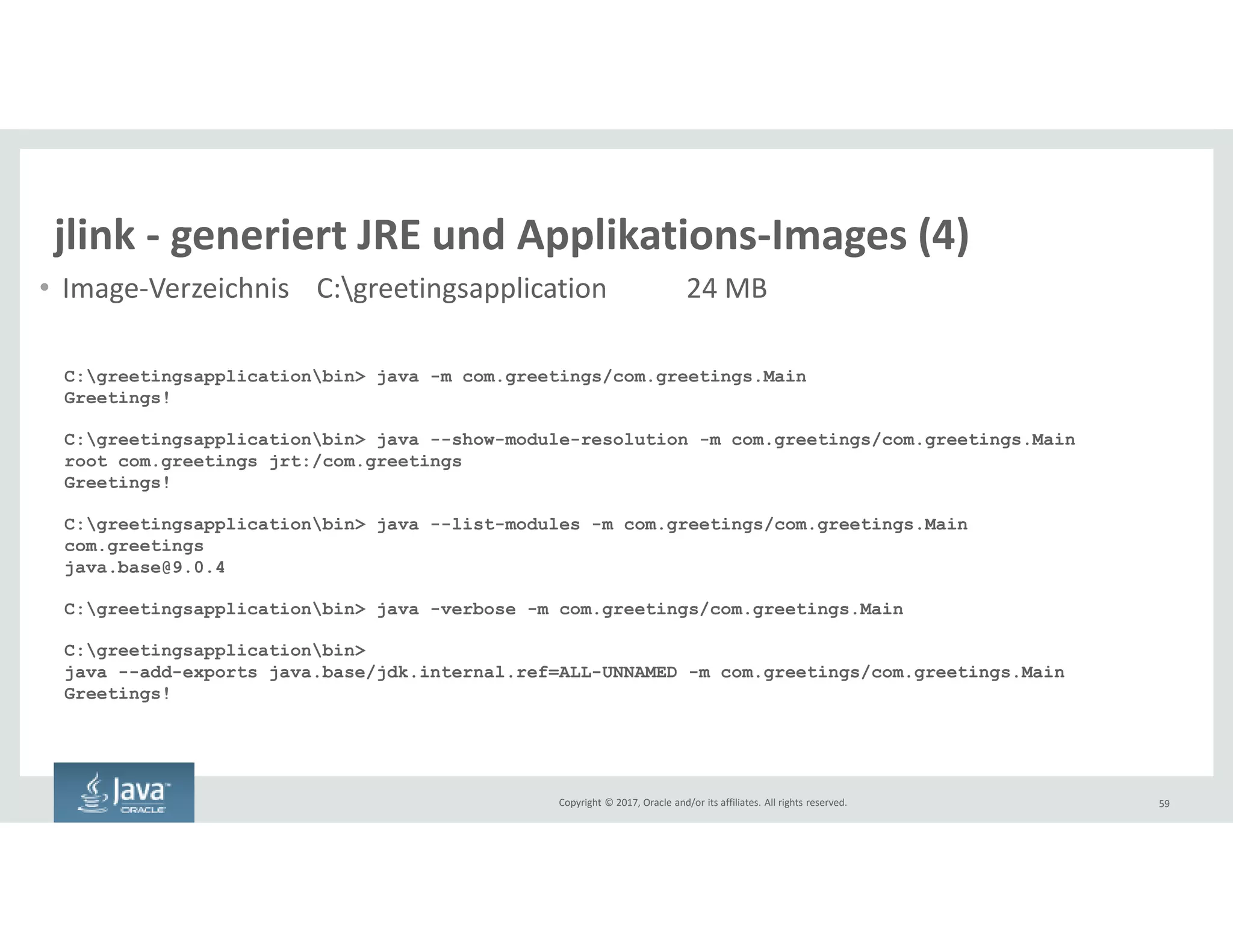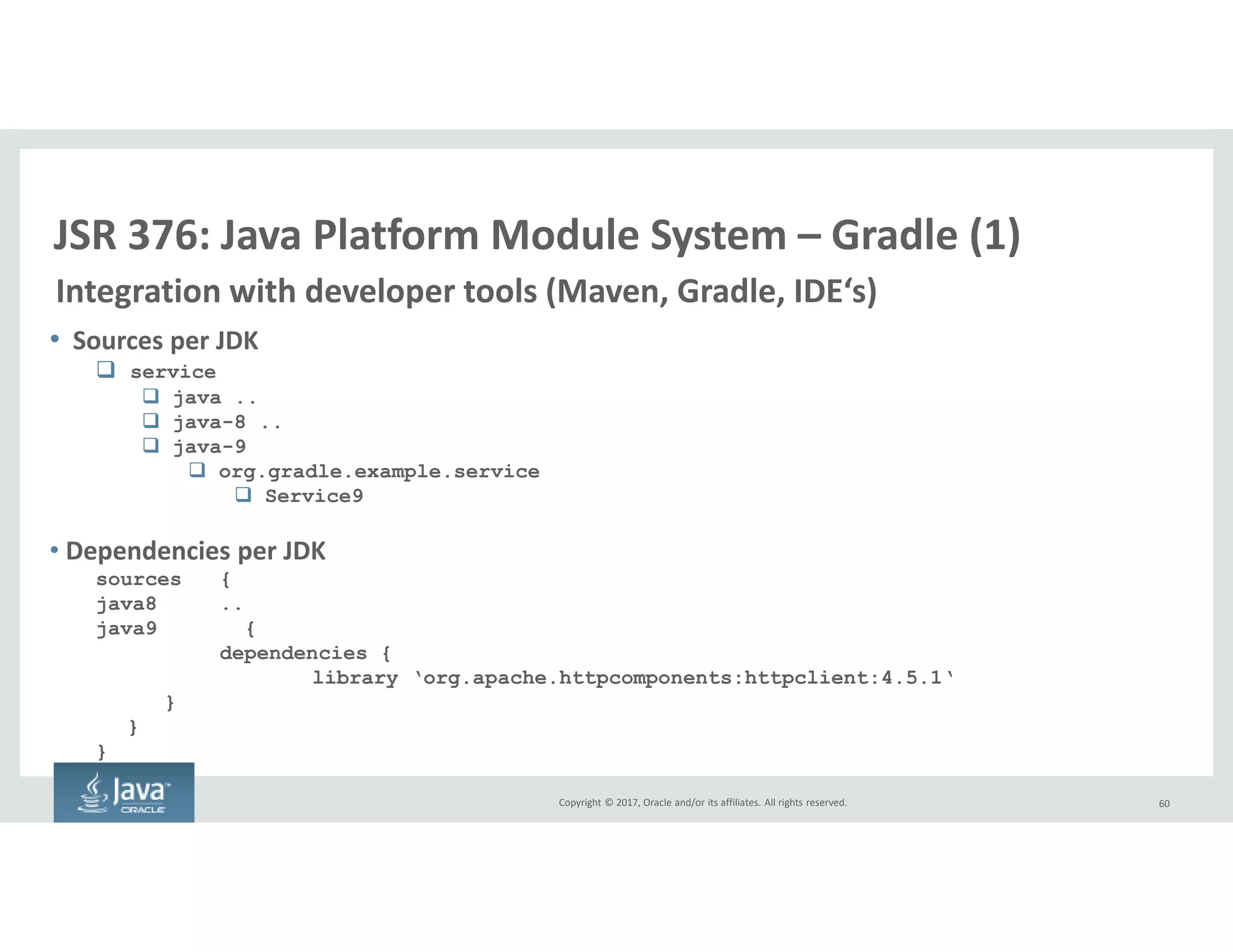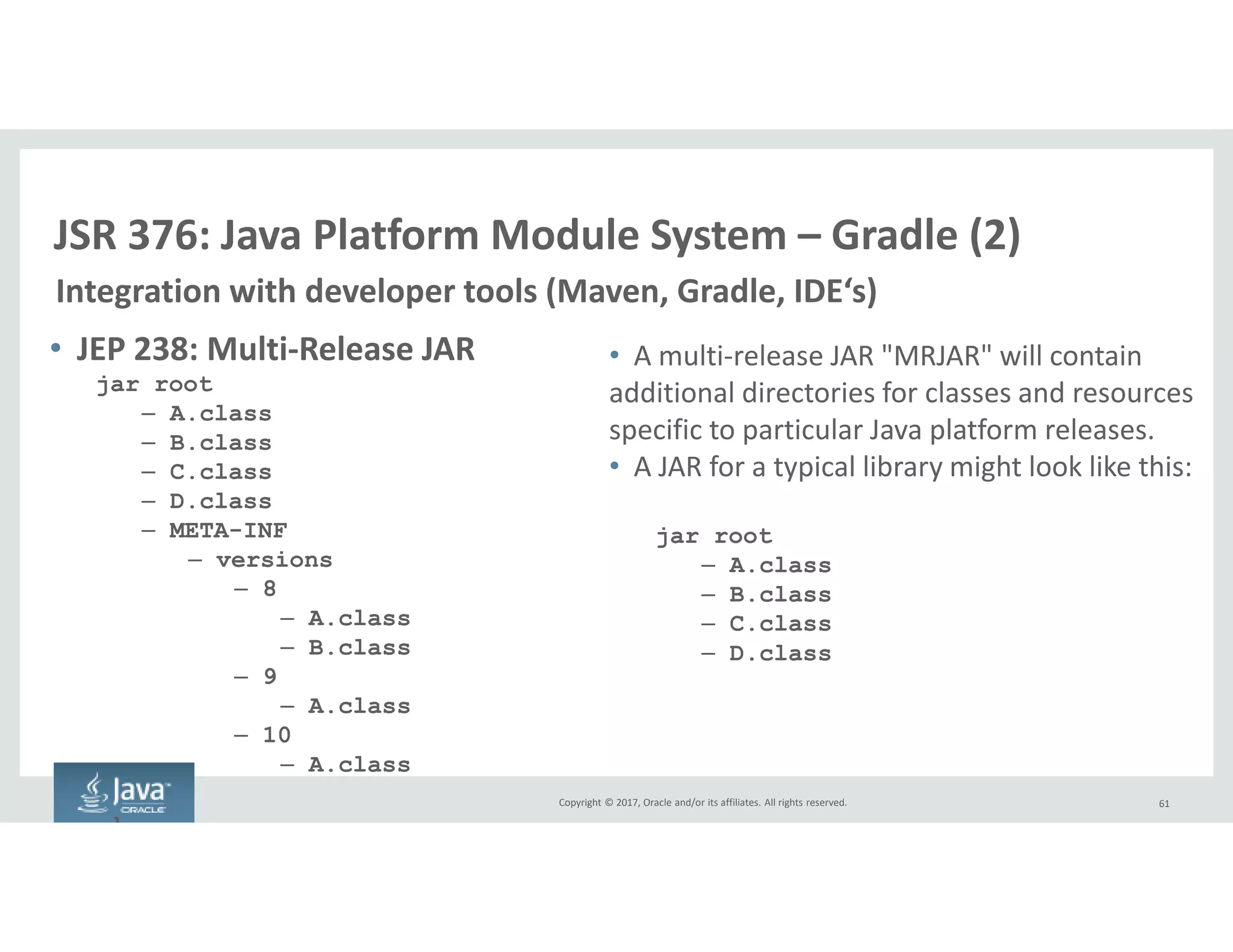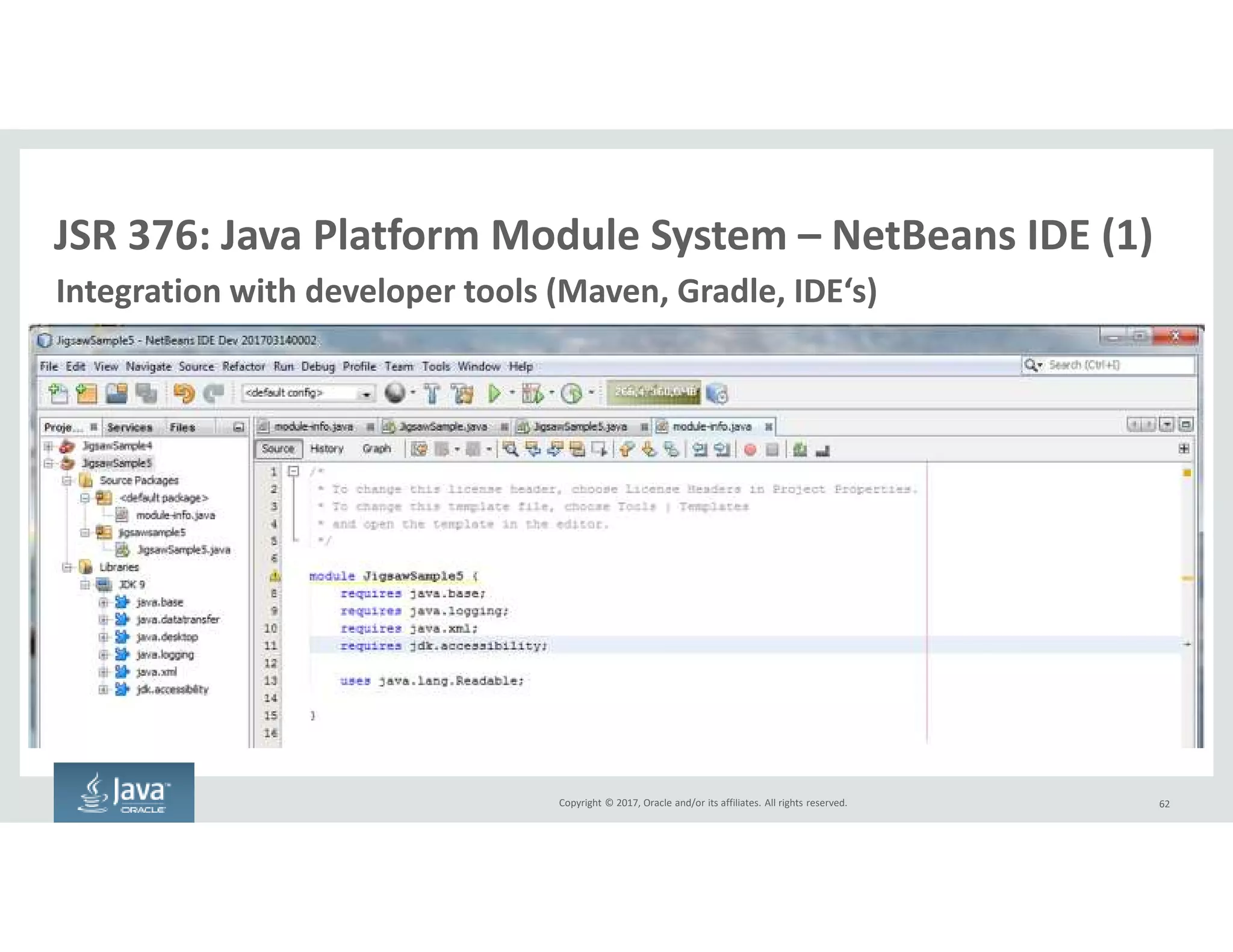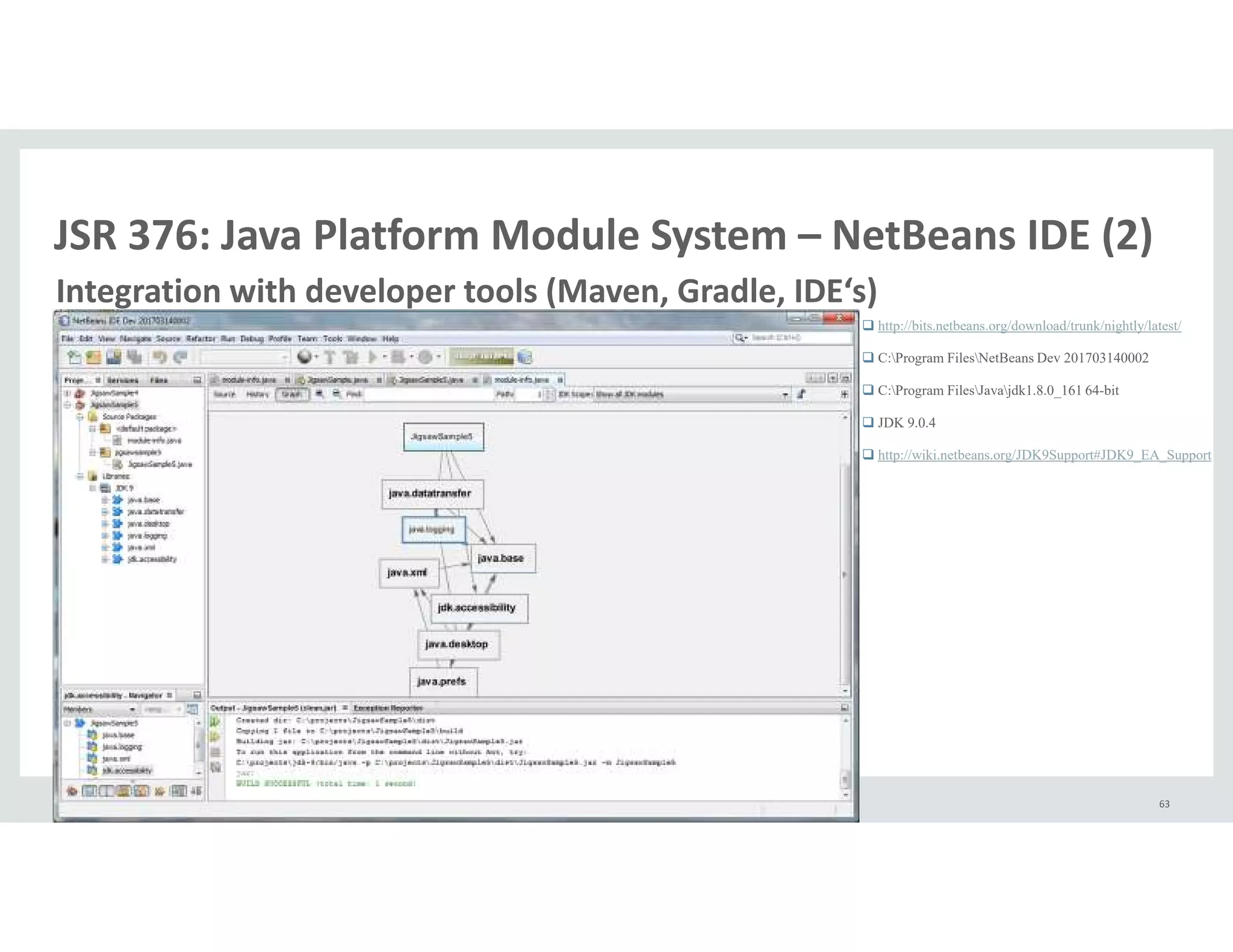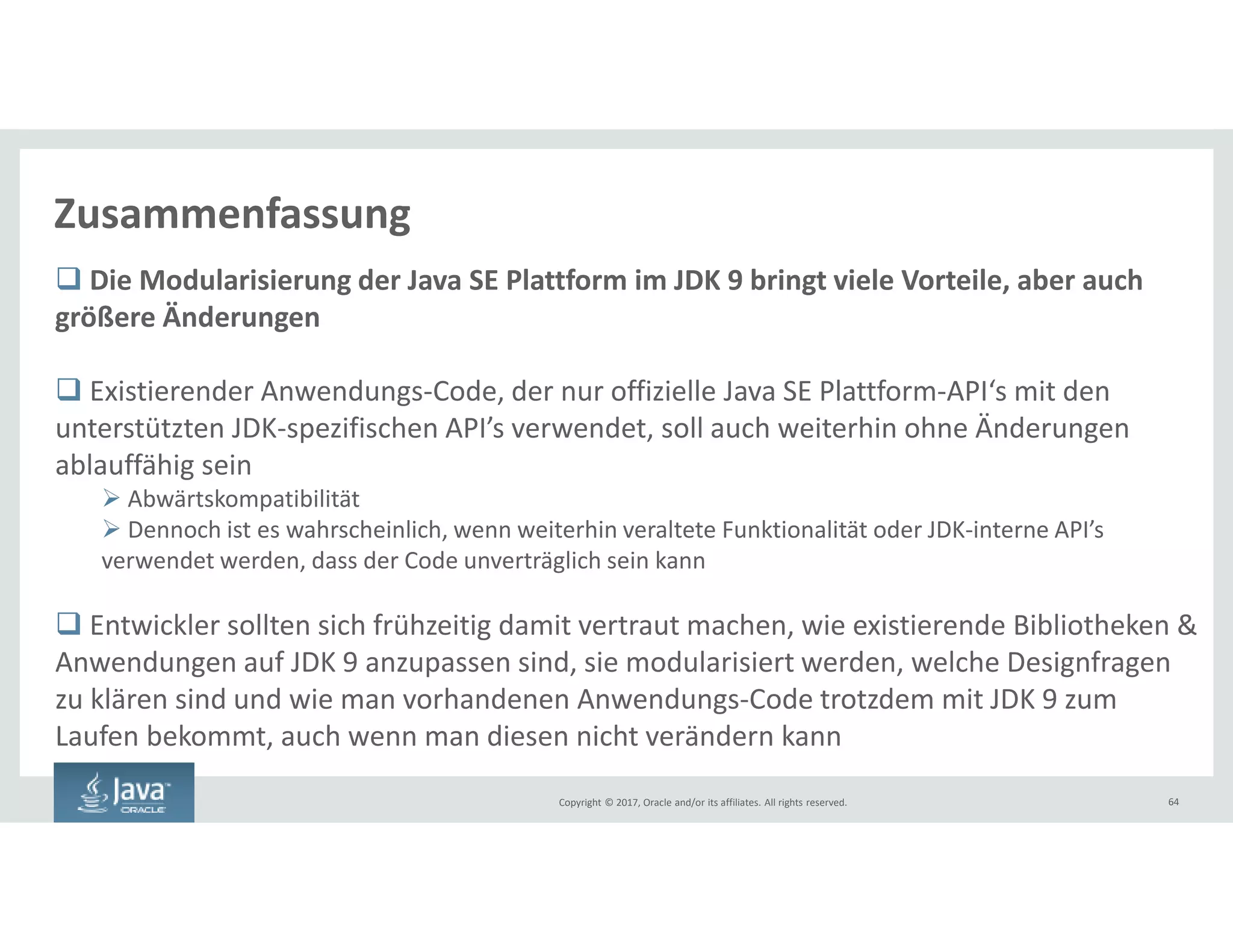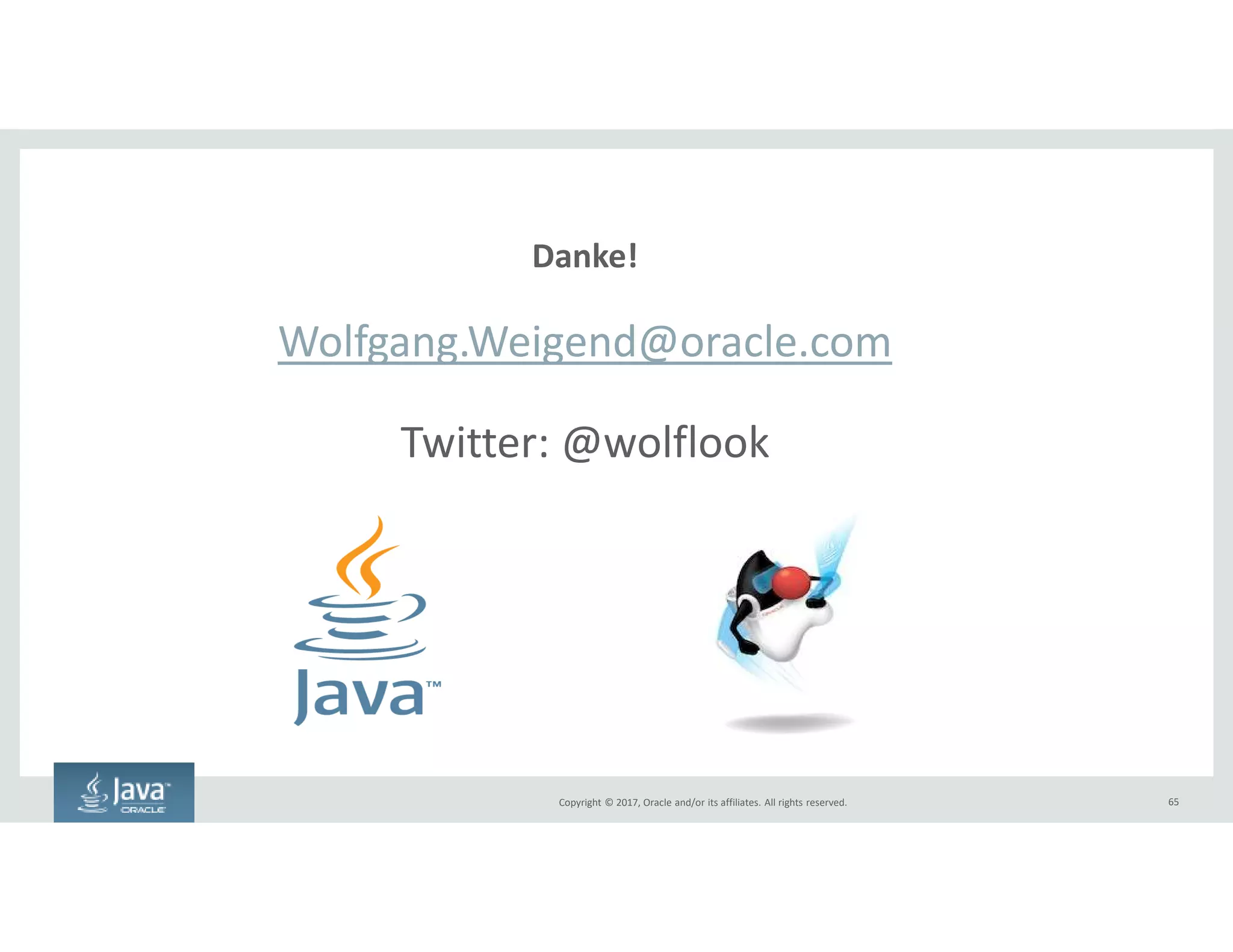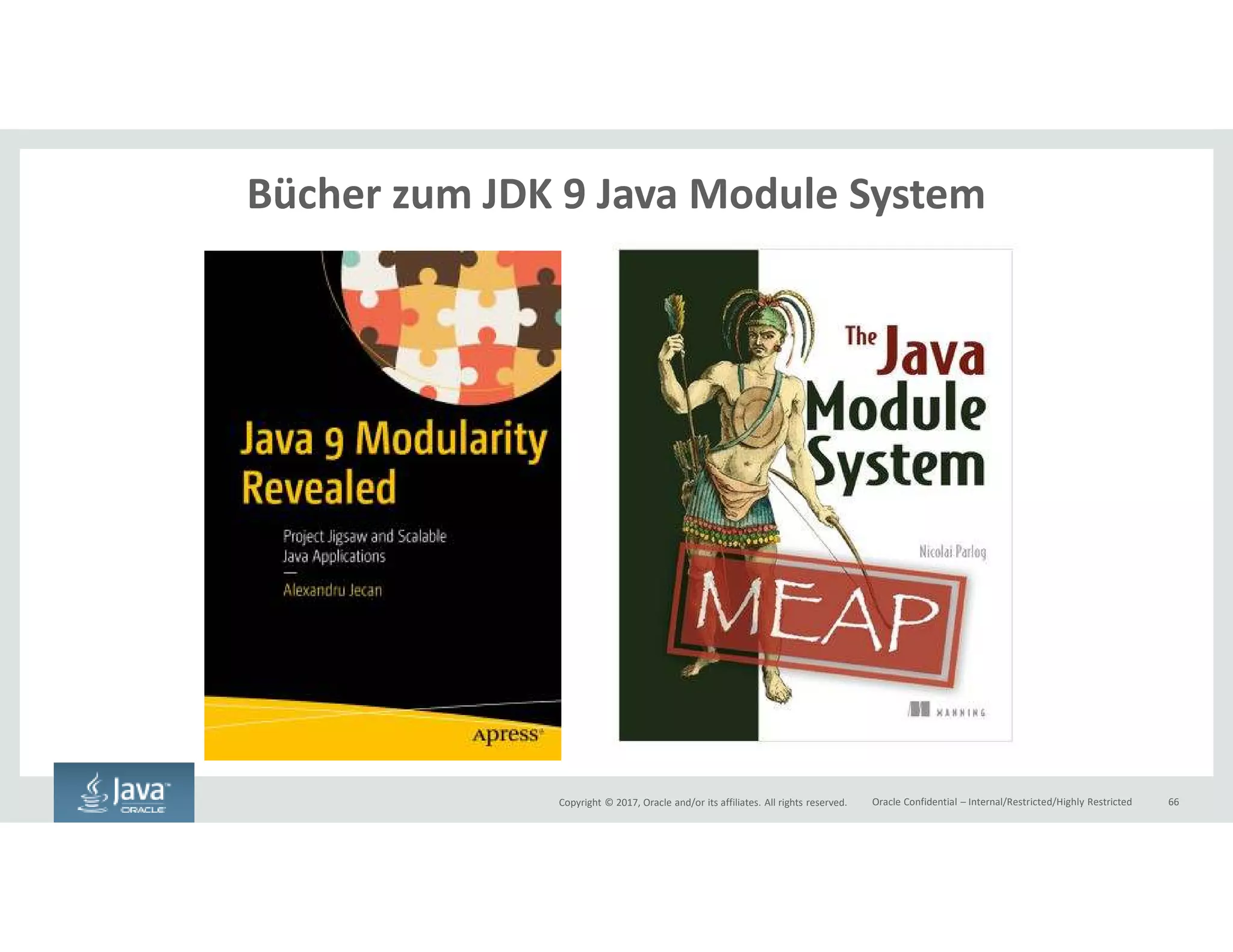The document discusses the new versioning scheme for JDK 9, which simplifies the version numbers. Key points include:
1. Version numbers will now be in the format of major.minor.security (e.g. 9.0.1) rather than the previous format.
2. The G1 garbage collector will be the default collector in JDK 9.
3. JEP 222 introduces jshell, a read-eval-print loop for Java that allows interactive testing of code snippets.
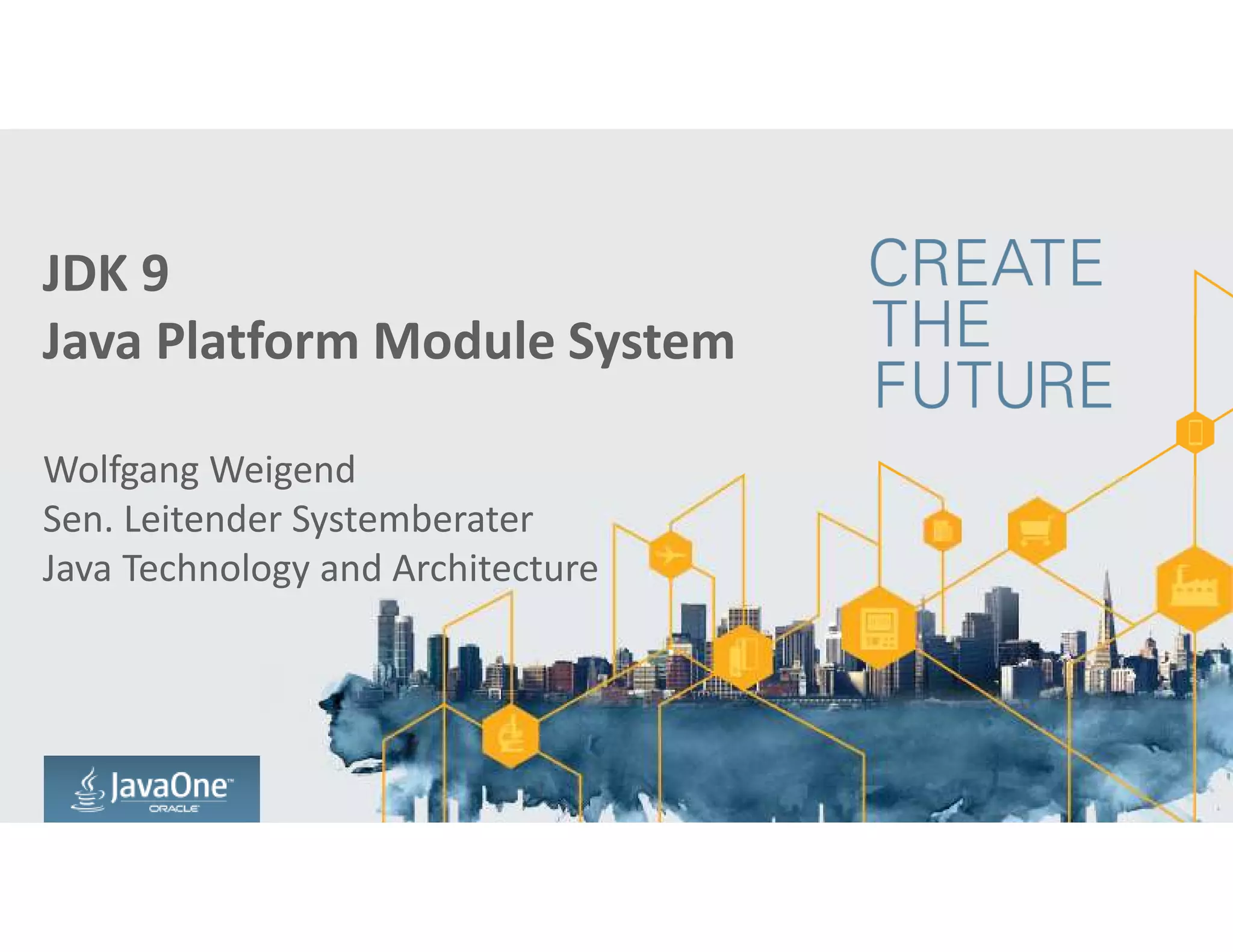
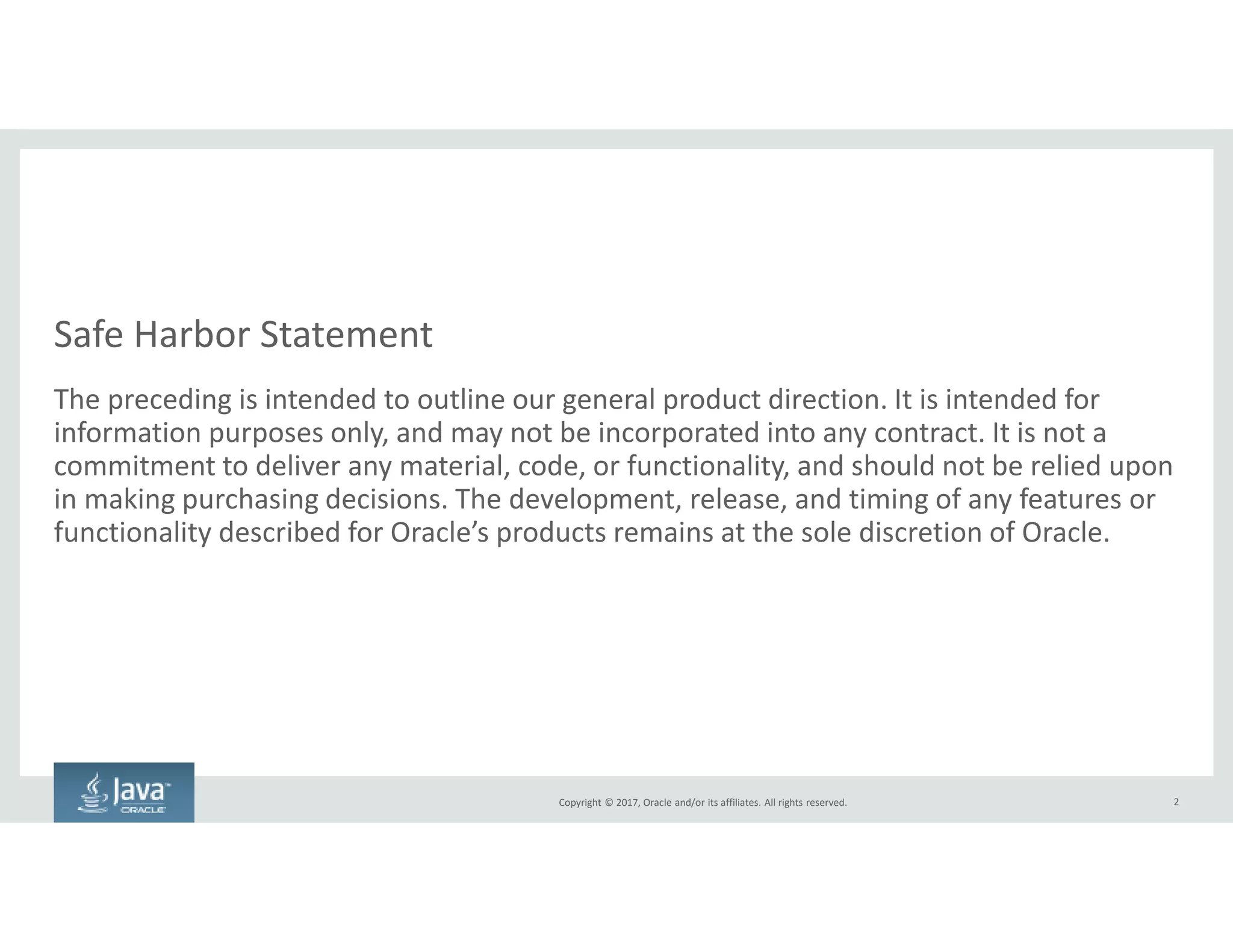
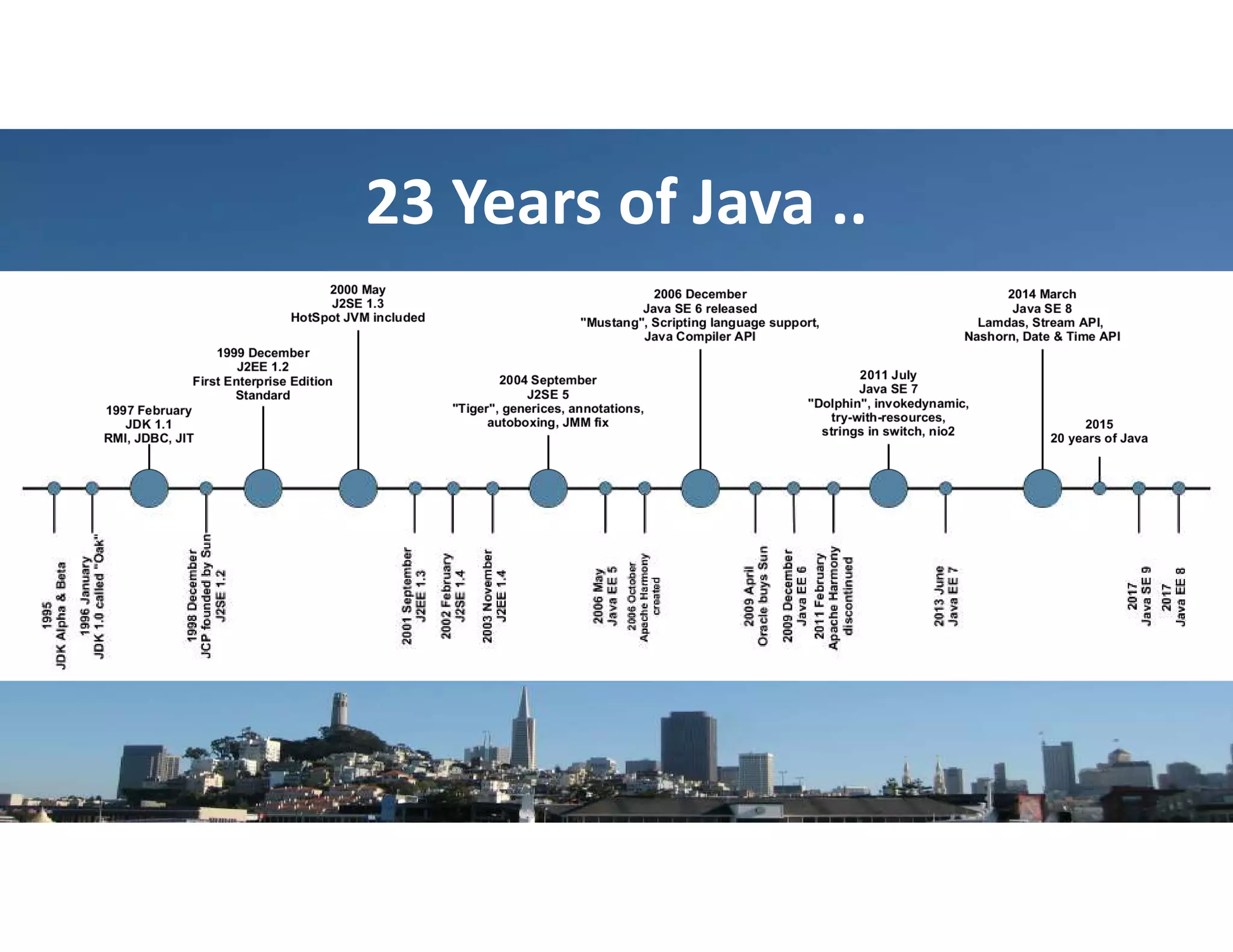
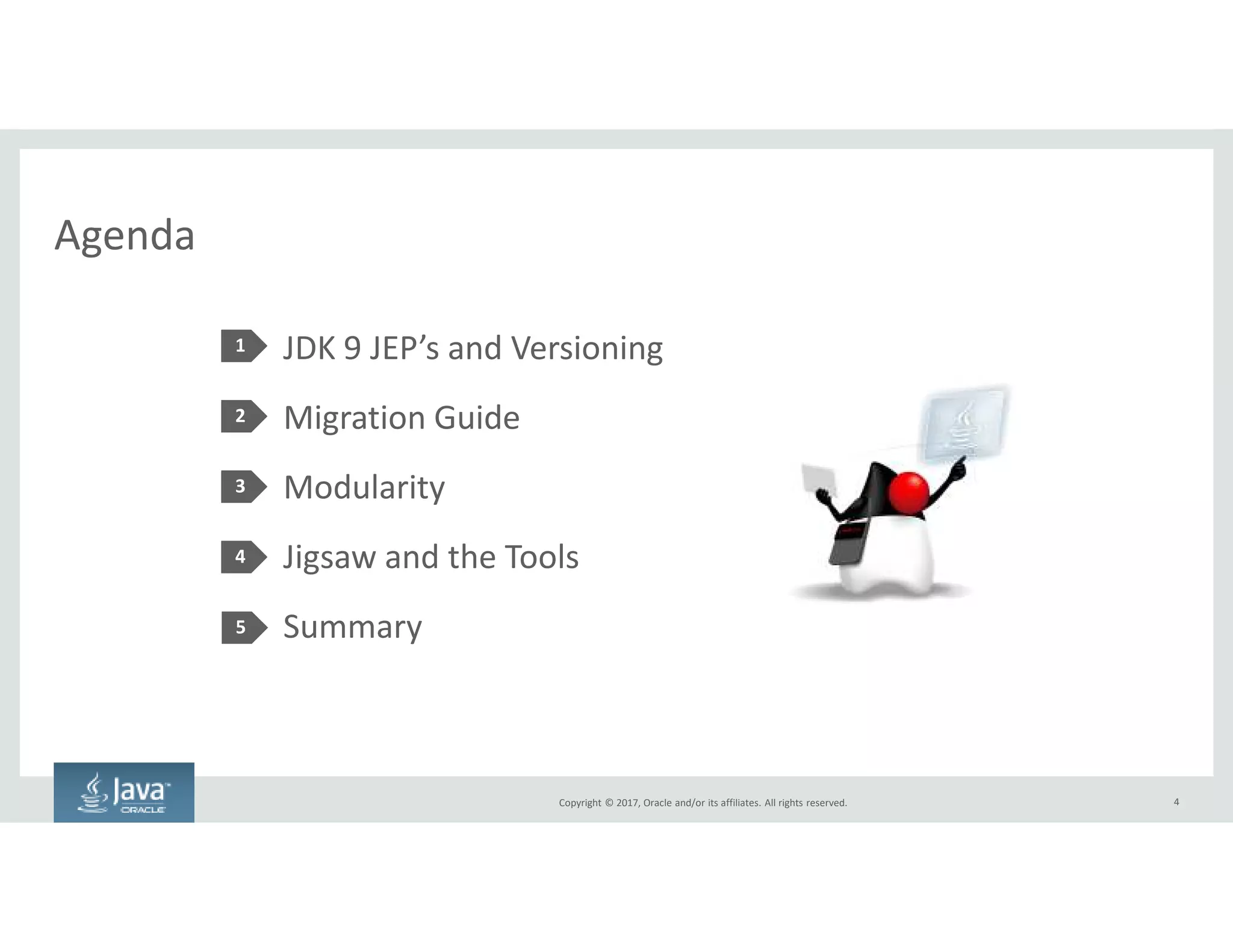

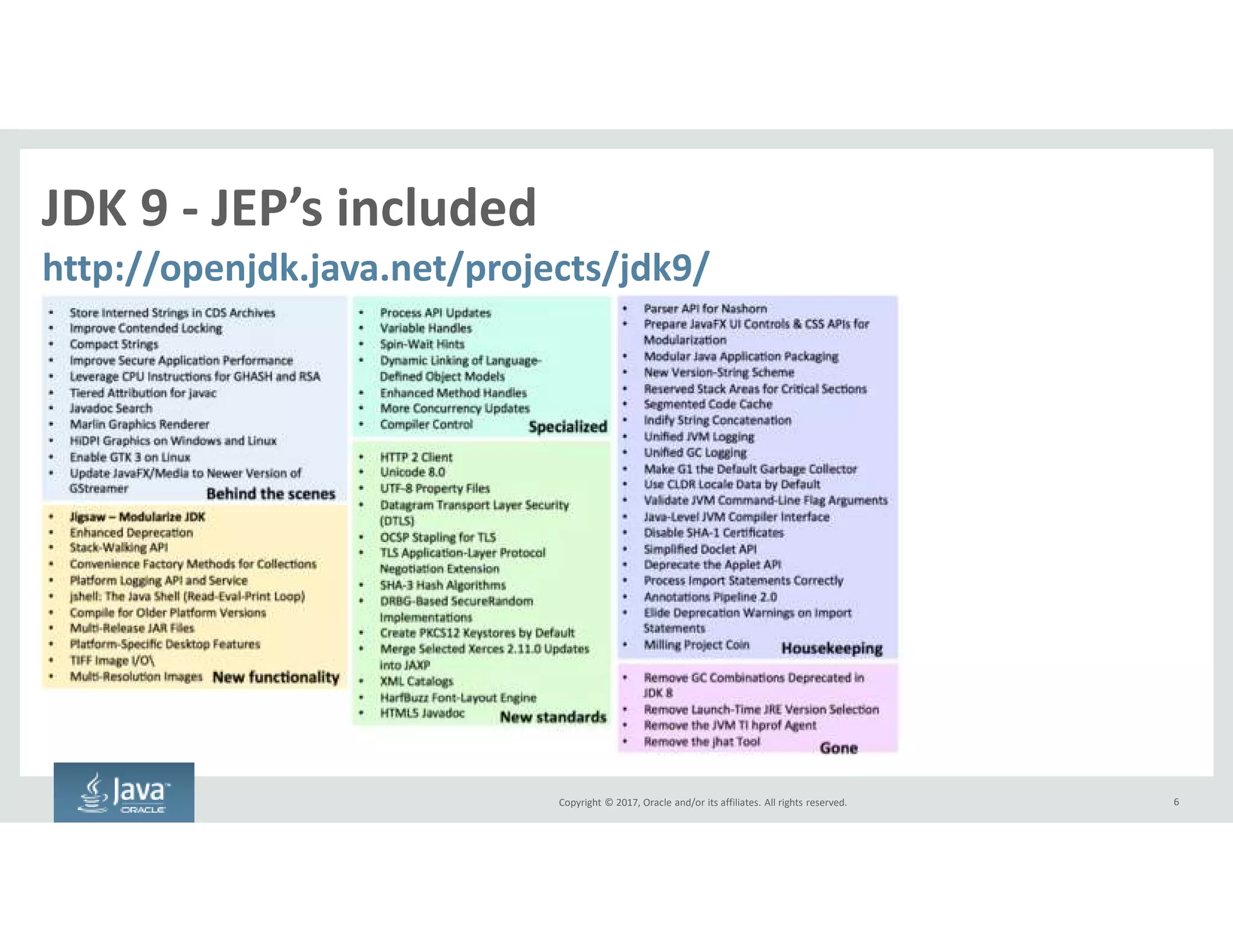

![Copyright © 2017, Oracle and/or its affiliates. All rights reserved. 8
JEP 222: jshell – Read-Eval-Print Loop (1)
Useful for prototyping and testing Java code snippets
C:jdk-9.0.1> jshell
| Welcome to JShell -- Version 9.0.1
| For an introduction type: /help intro
-> /help
| Type a Java language expression, statement, or declaration.
| Or type one of the following commands:
|
| /list [<name or id>|-all|-start] list the source you have typed
| /edit <name or id> edit a source entry referenced by name or id
| /drop <name or id> delete a source entry referenced by name or id
| /save [-all|-history|-start] <file> Save snippet source to a file.
| /open <file> open a file as source input
| /vars [<name or id>|-all|-start] list the declared variables and their values
| /methods [<name or id>|-all|-start] list the declared methods and their signatures
| /types [<name or id>|-all|-start] list the declared types
| /imports list the imported items
| /exit exit jshell
| /env [-class-path <path>] [-module-path <path>] [-add-modules <modules>] ... view or change the evaluation context
| /reset [-class-path <path>] [-module-path <path>] [-add-modules <modules>]... reset jshell
| /reload [-restore] [-quiet] [-class-path <path>] [-module-path <path>]... reset and replay relevant history -- current or previous (-restore)
| /history history of what you have typed
| /help [<command>|<subject>] get information about jshell
| /set editor|start|feedback|mode|prompt|truncation|format ... set jshell configuration information
| /? [<command>|<subject>] get information about jshell
| /! re-run last snippet
| /<id> re-run snippet by id
| /-<n> re-run n-th previous snippet
->](https://image.slidesharecdn.com/oraclejdk9javaplatformmodulesystem-180207191440/75/JDK-9-Java-Platform-Module-System-8-2048.jpg)

![Copyright © 2017, Oracle and/or its affiliates. All rights reserved.
JEP 223: New Version-String Scheme (1)
Revise the JDK's version-string scheme: Project Verona
10
• It's long past time for a simpler, more intuitive versioning scheme.
• A version number is a non-empty sequence of non-negative integer
numerals, without leading zeroes, separated by period characters
– [1-9][0-9]*(.(0|[1-9][0-9]*))*
• $MAJOR.$MINOR.$SECURITY
• A version string consists of a version number $VNUM, as described above,
optionally followed by pre-release and build information
• This proposal drops the initial 1 element from JDK version numbers.
– First release of JDK 9 will have the version number 9.0.0 rather than 1.9.0.0.](https://image.slidesharecdn.com/oraclejdk9javaplatformmodulesystem-180207191440/75/JDK-9-Java-Platform-Module-System-10-2048.jpg)
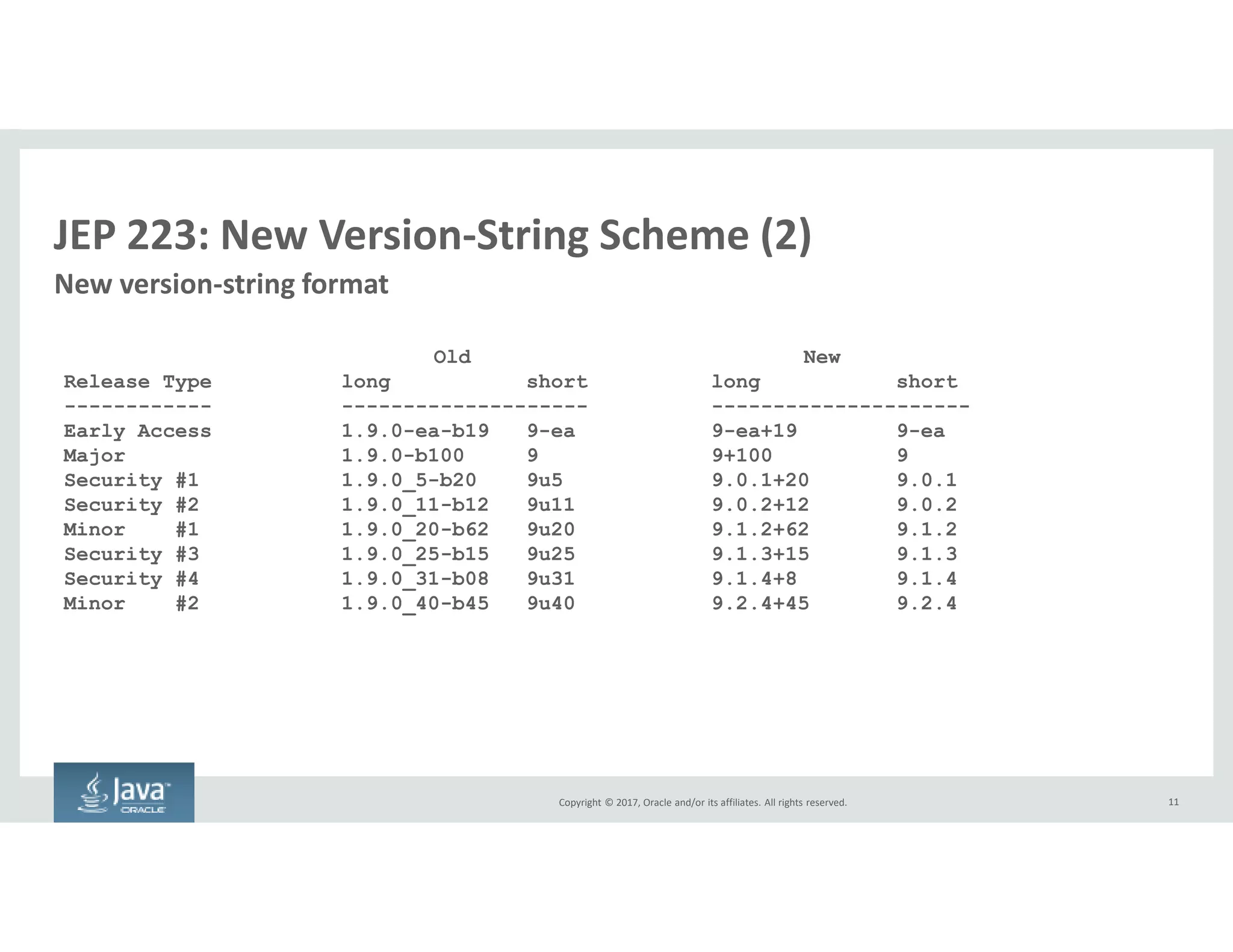
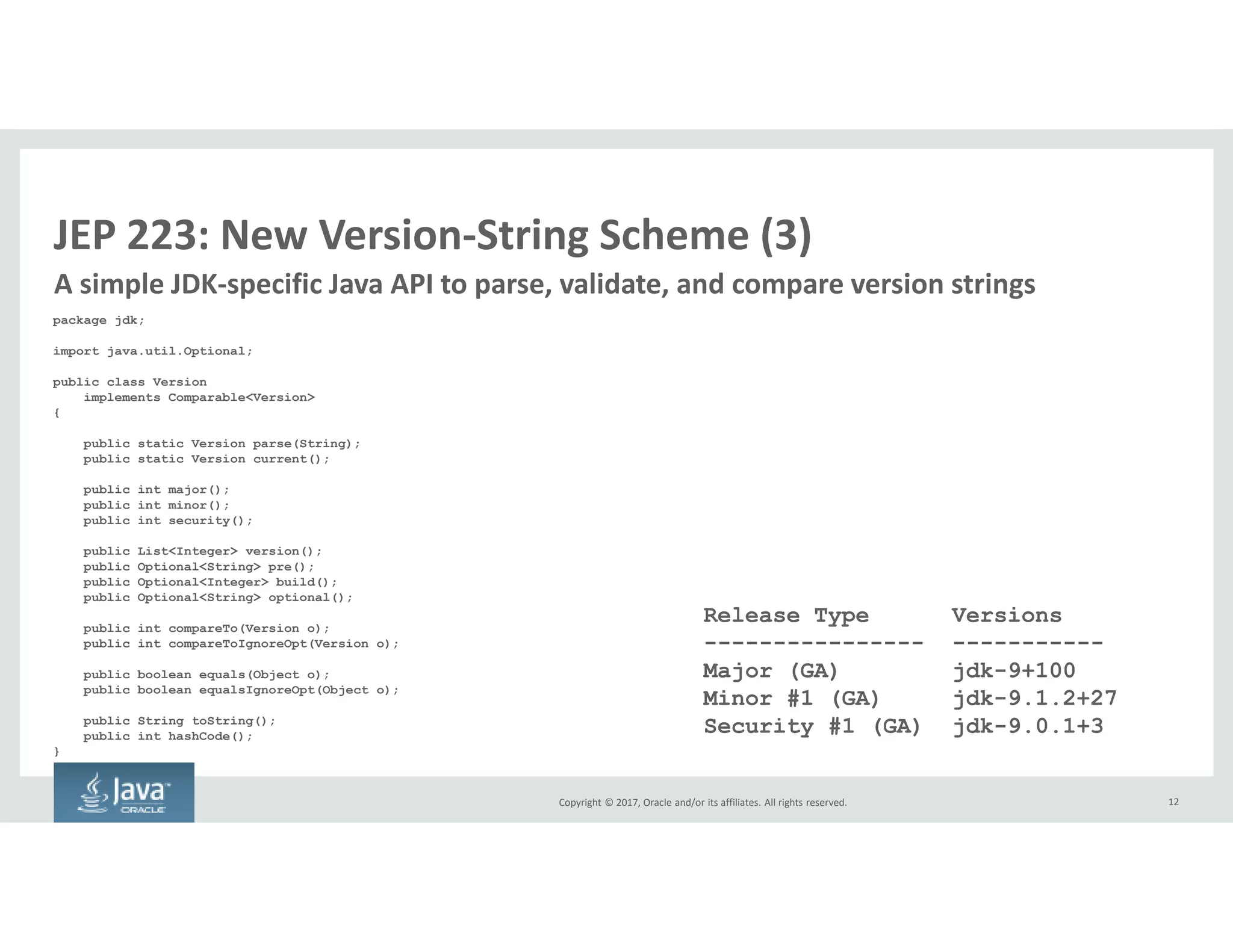

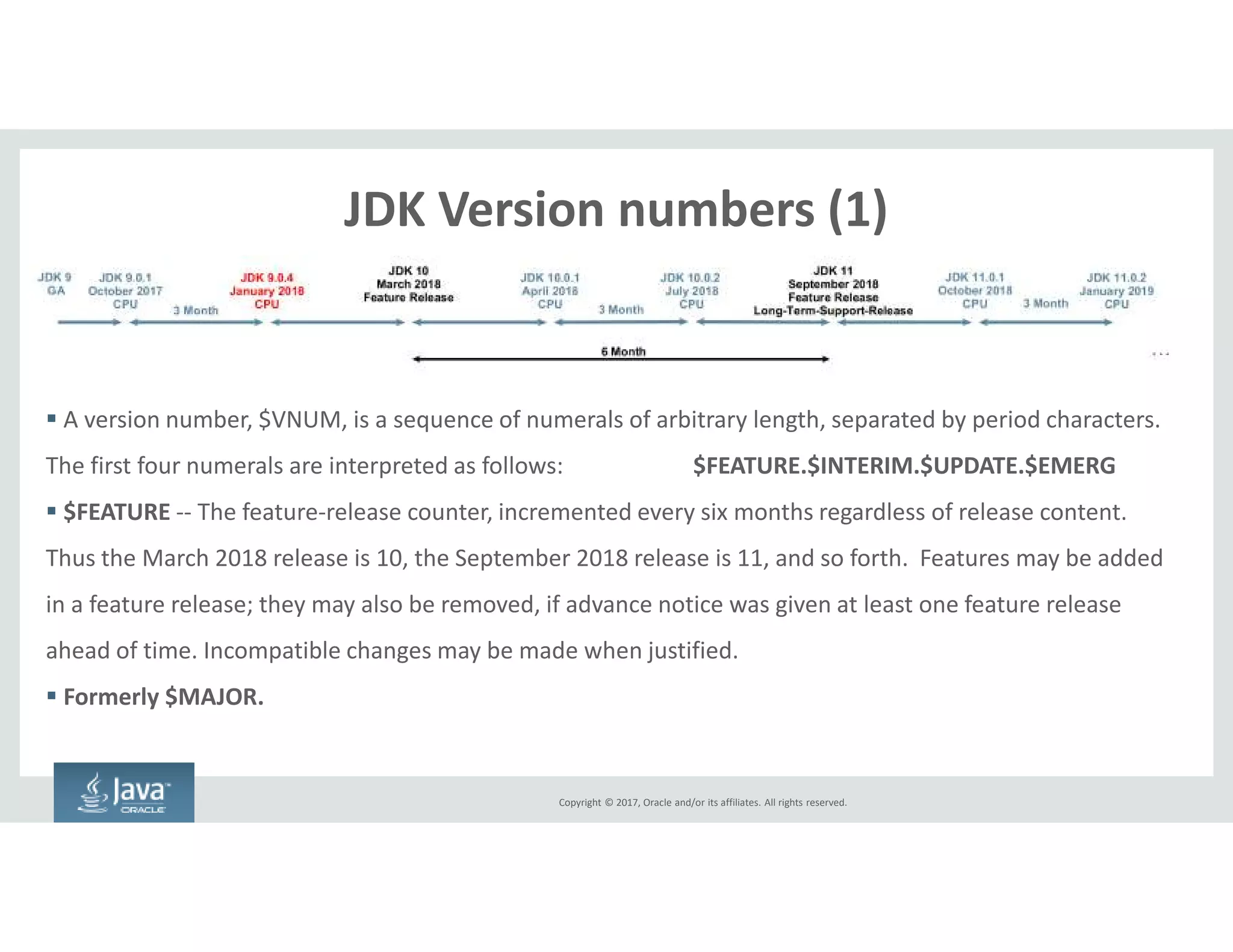
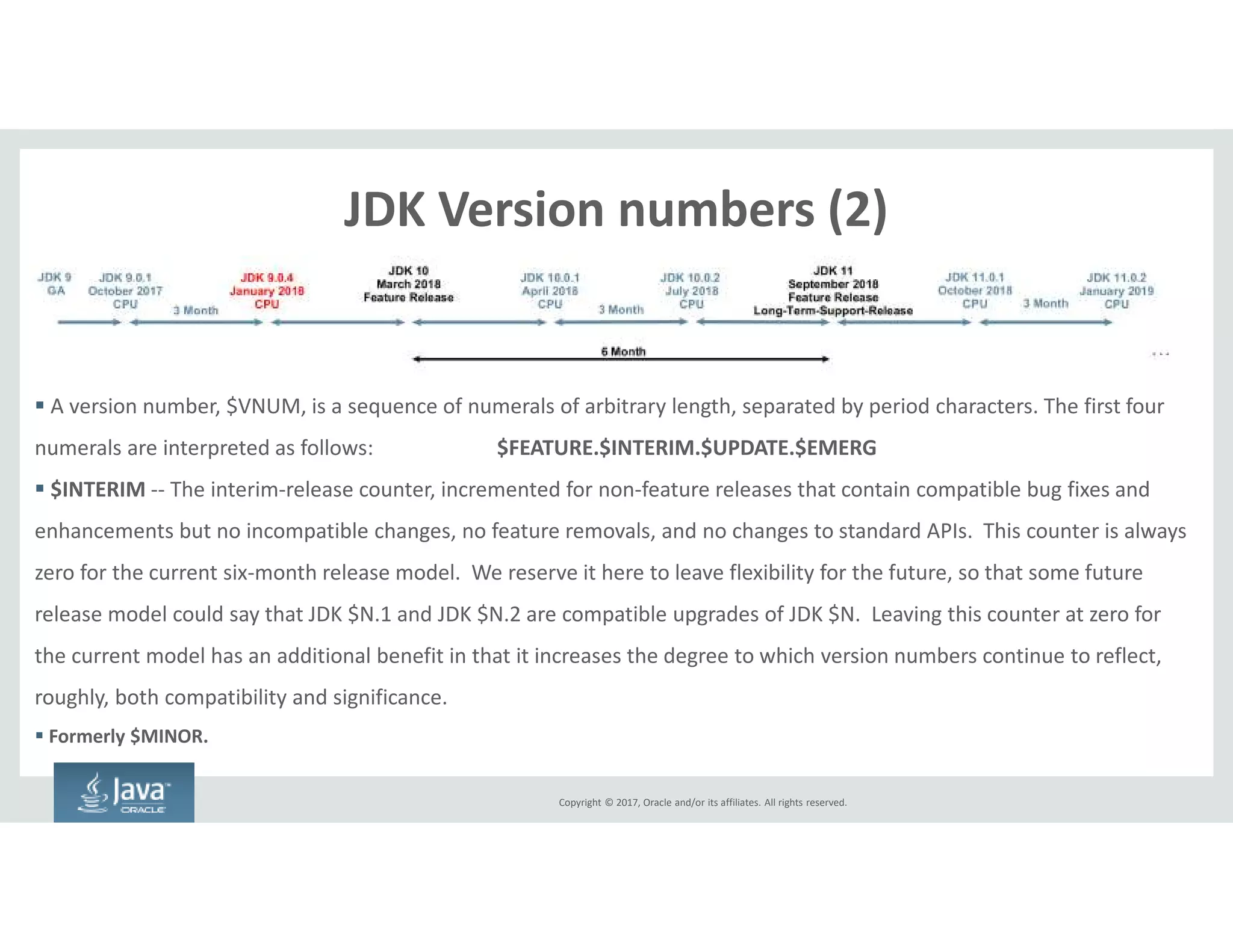
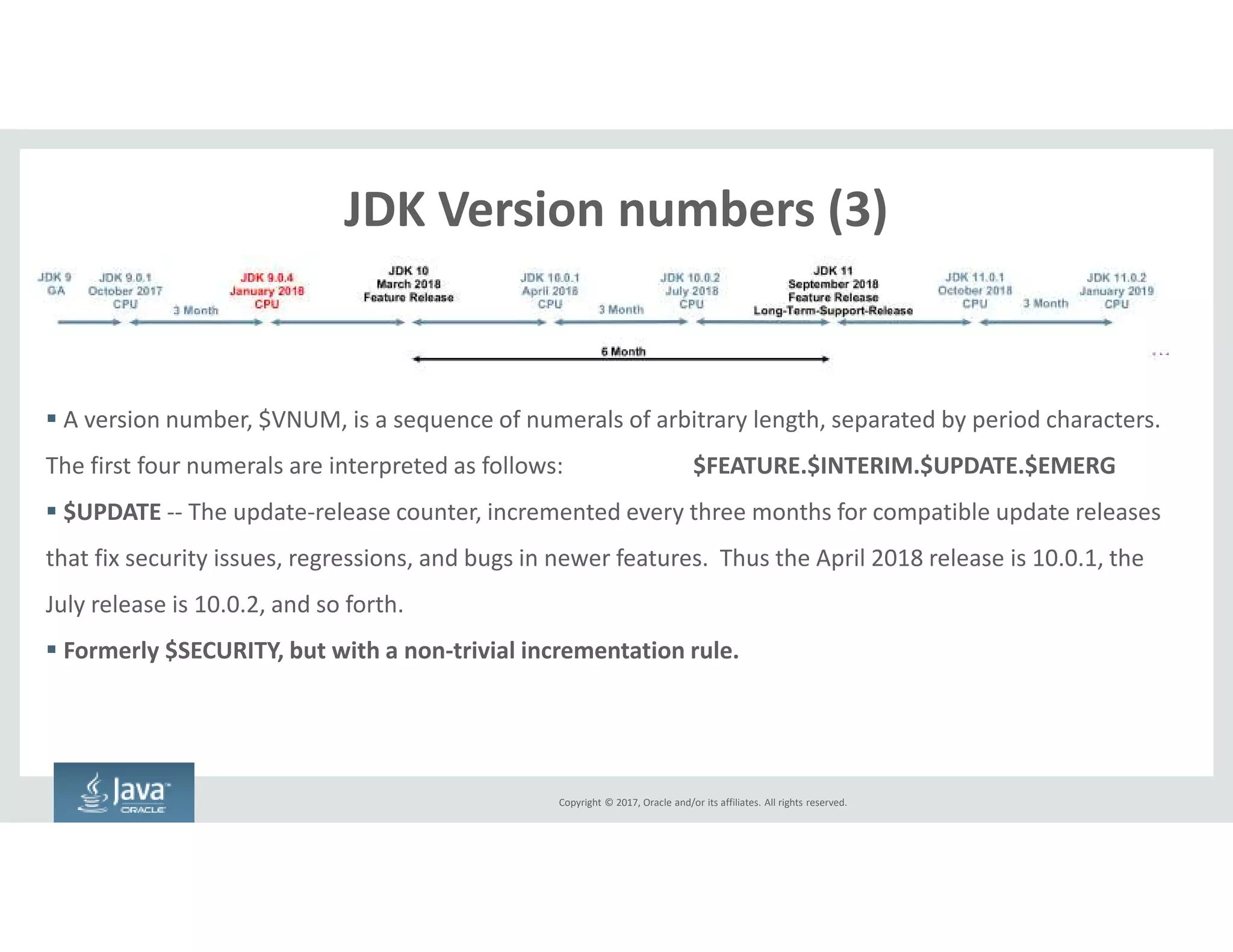
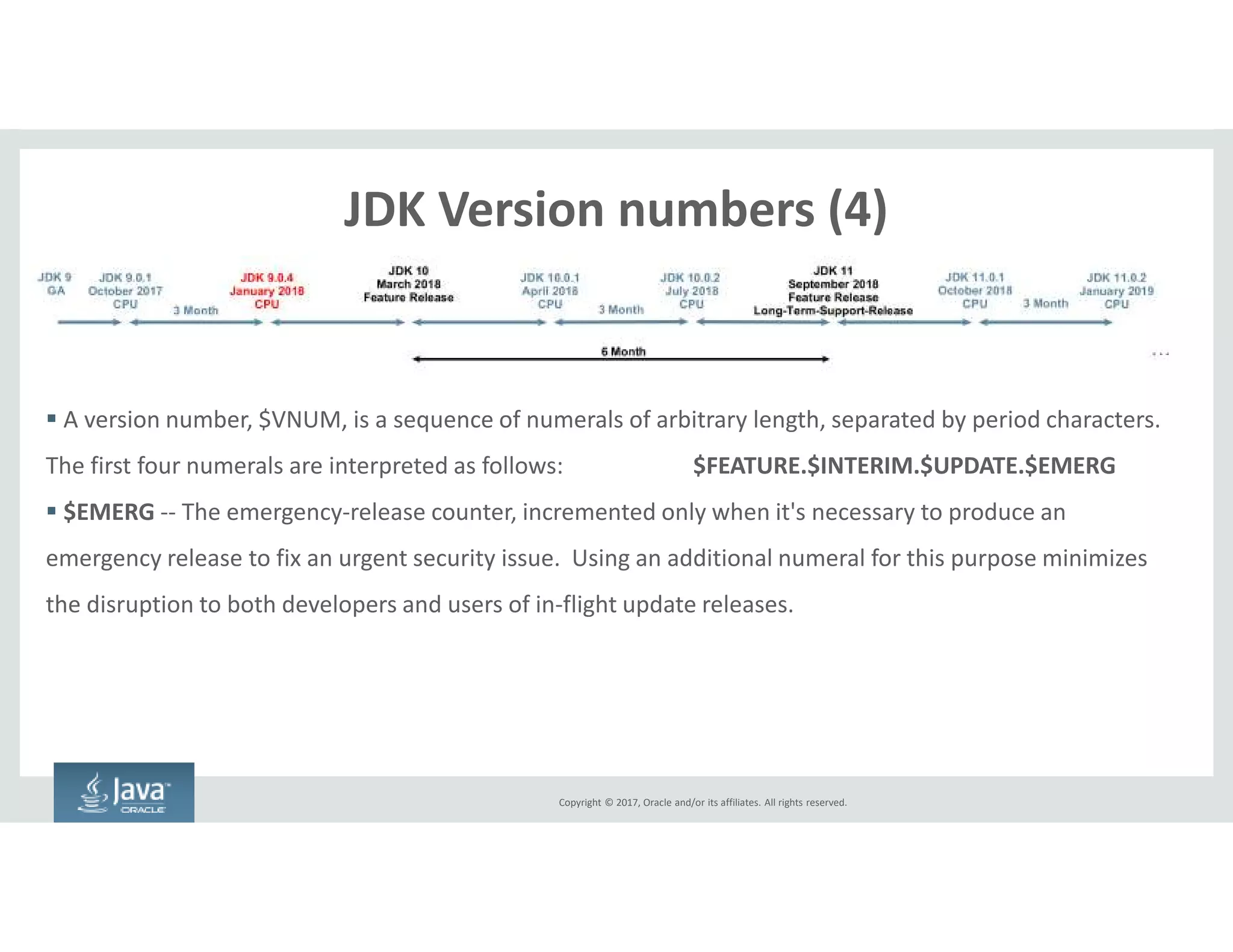
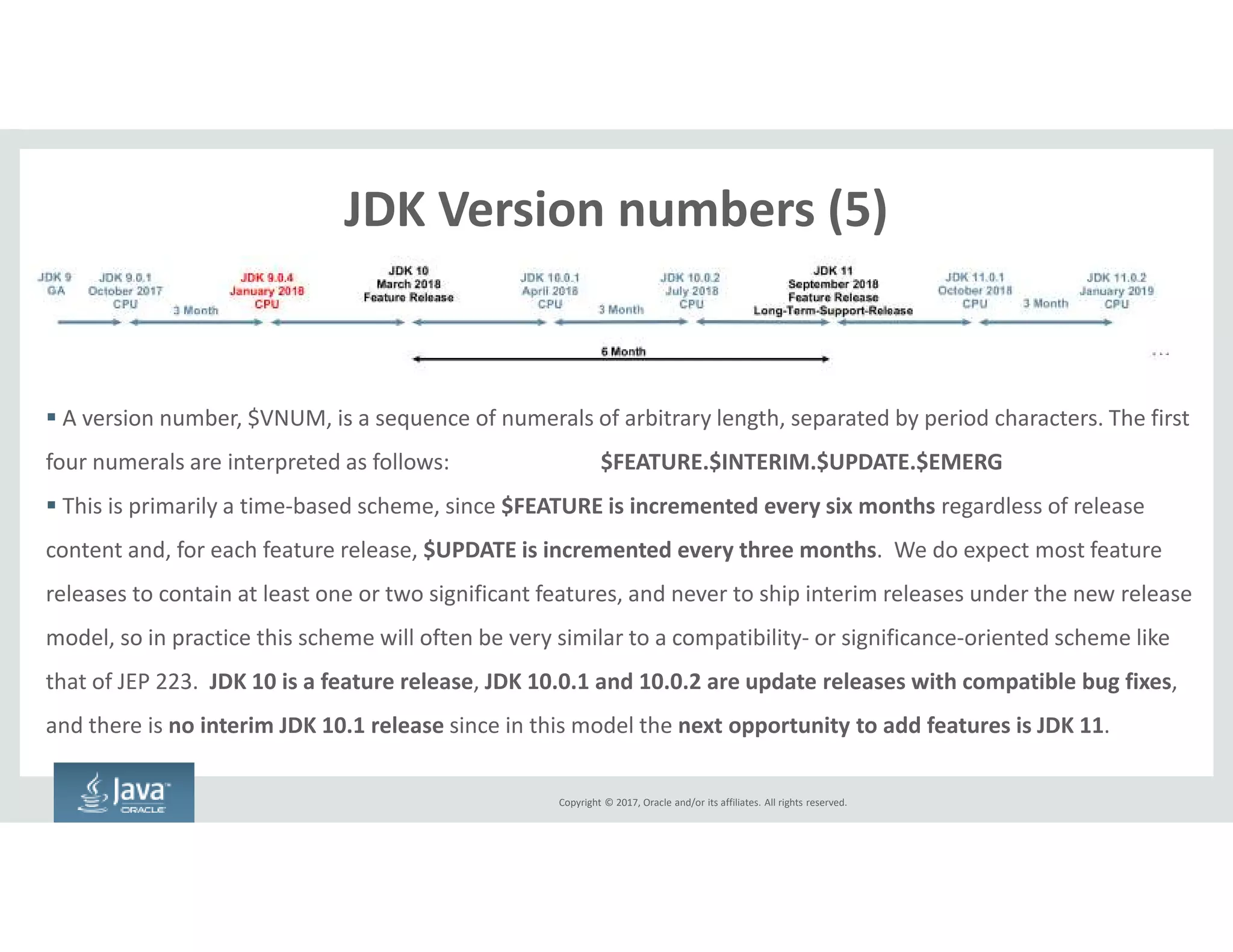
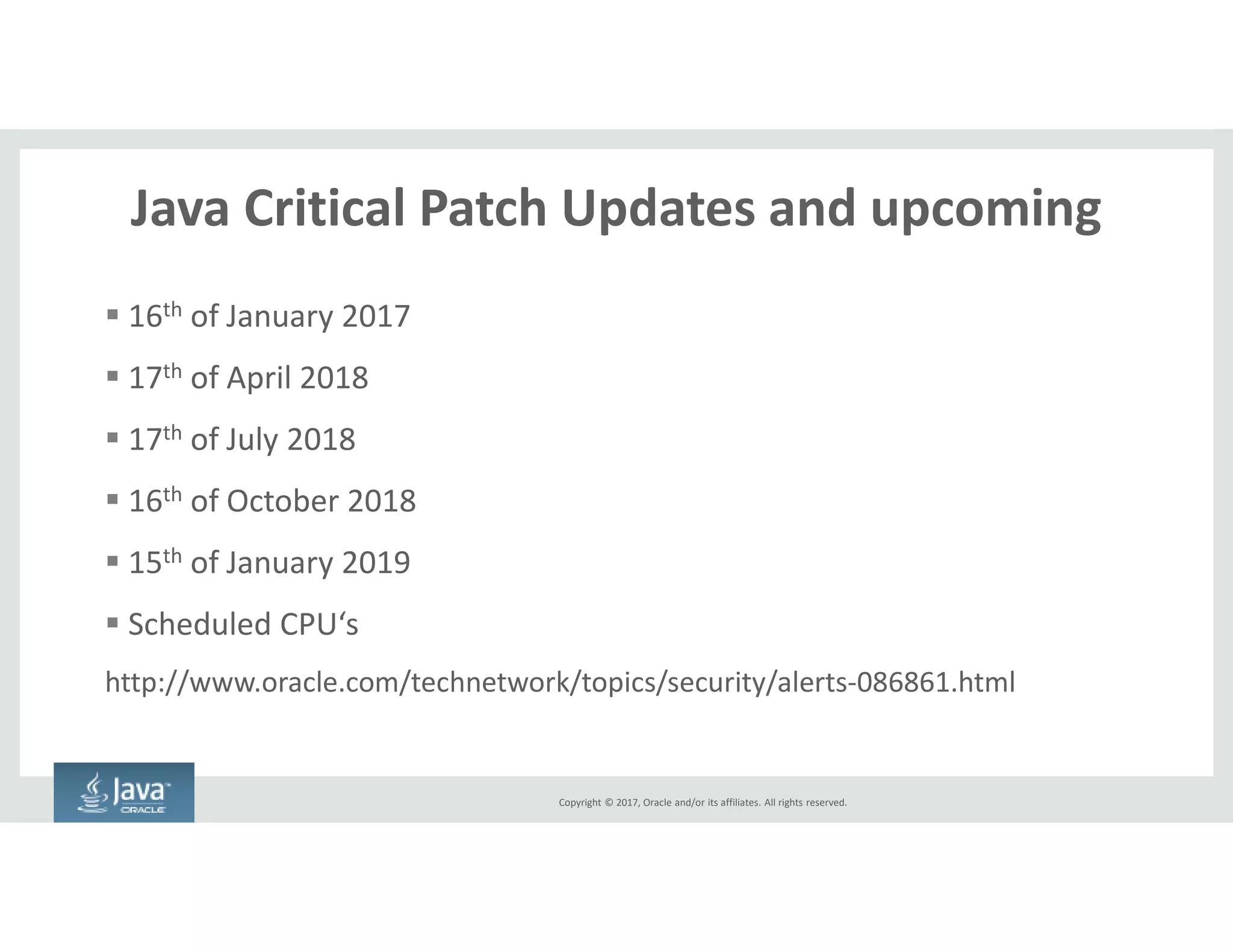
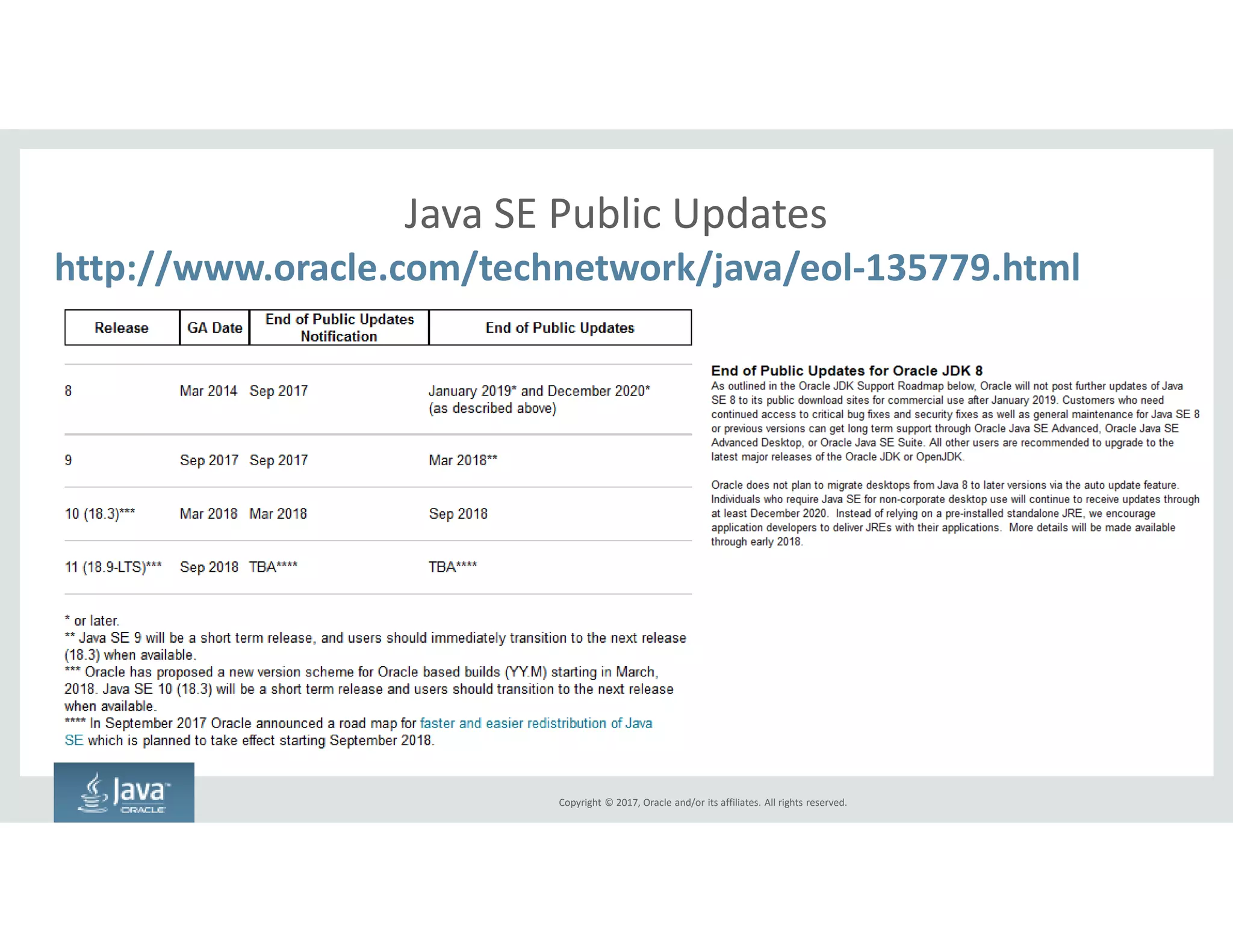
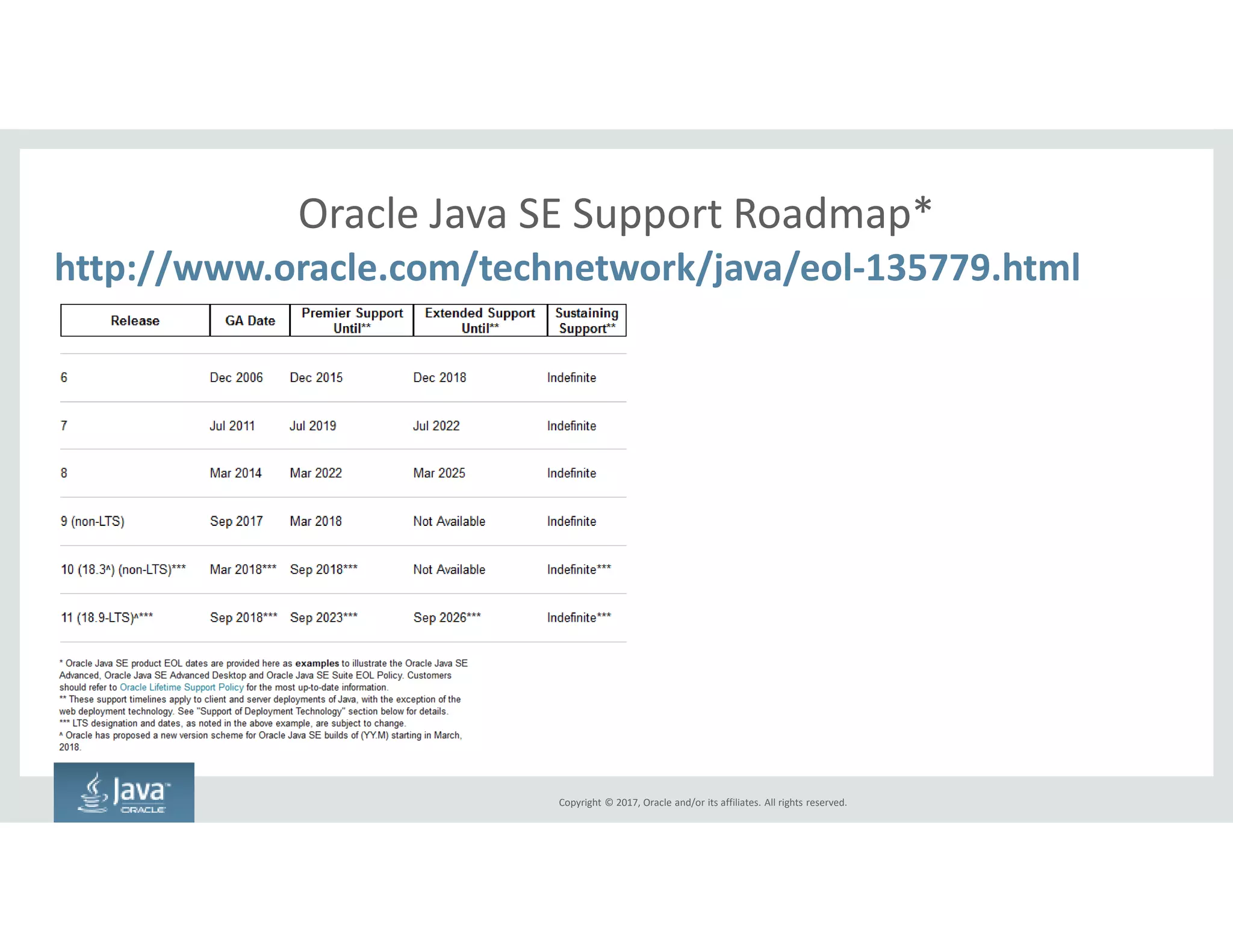

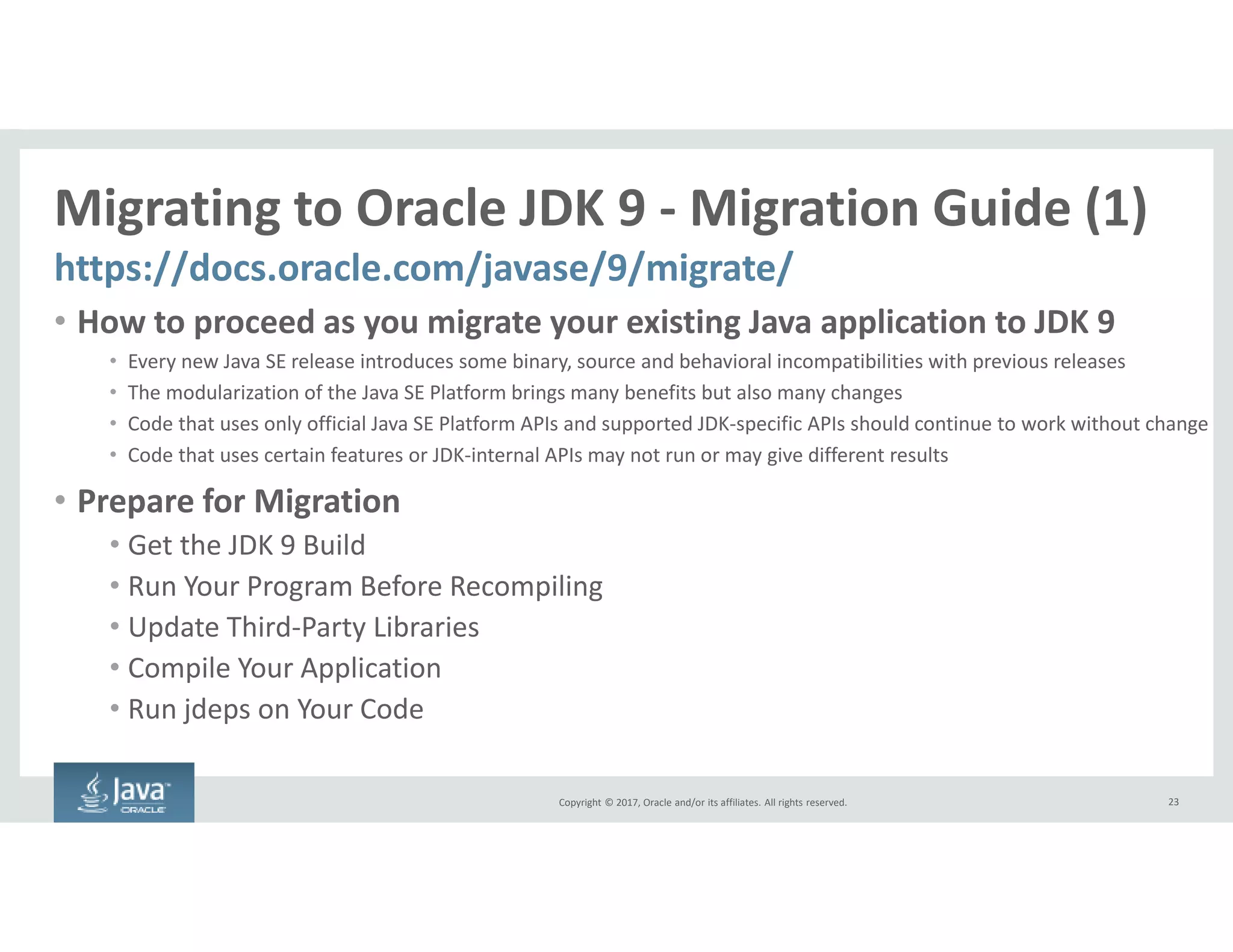
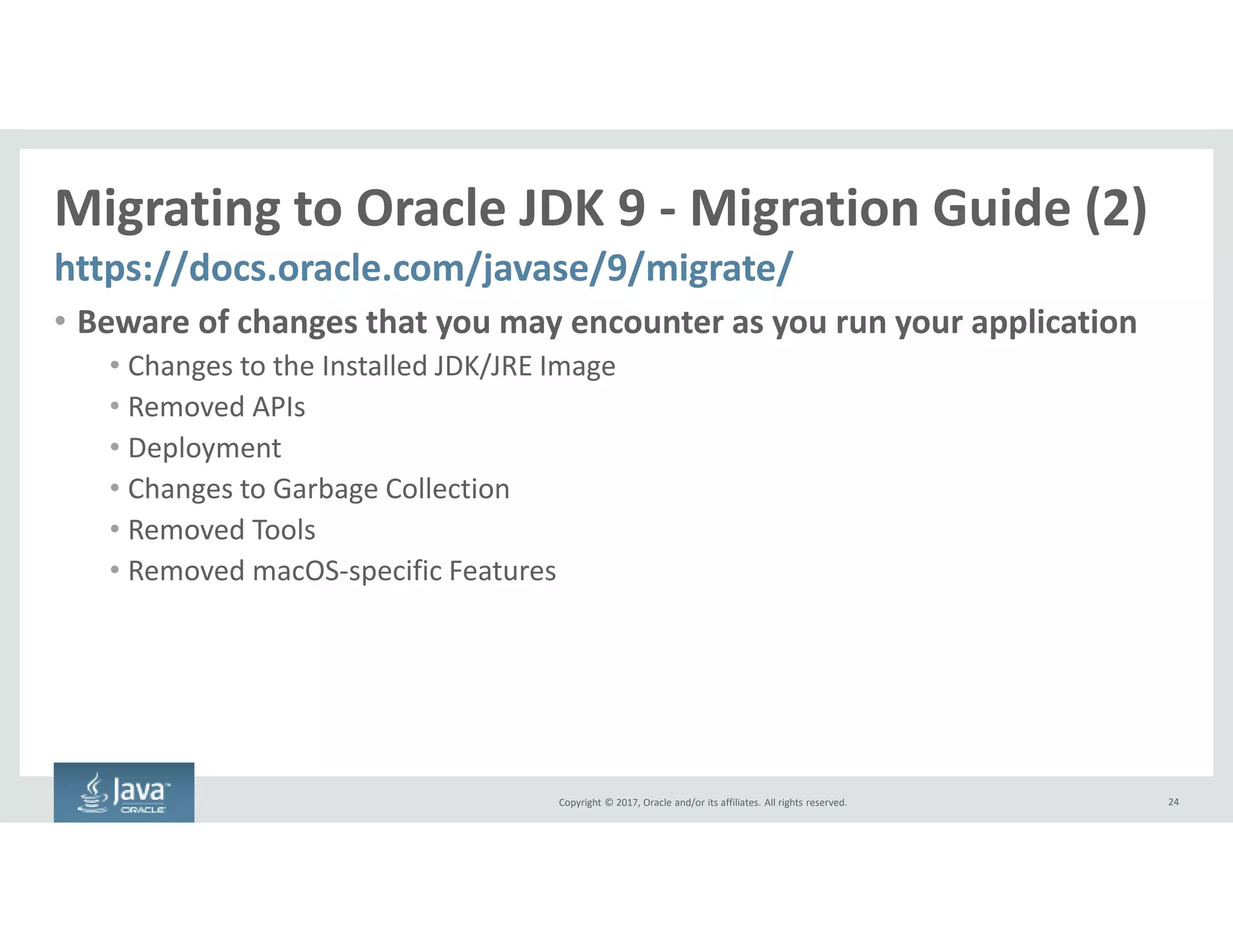
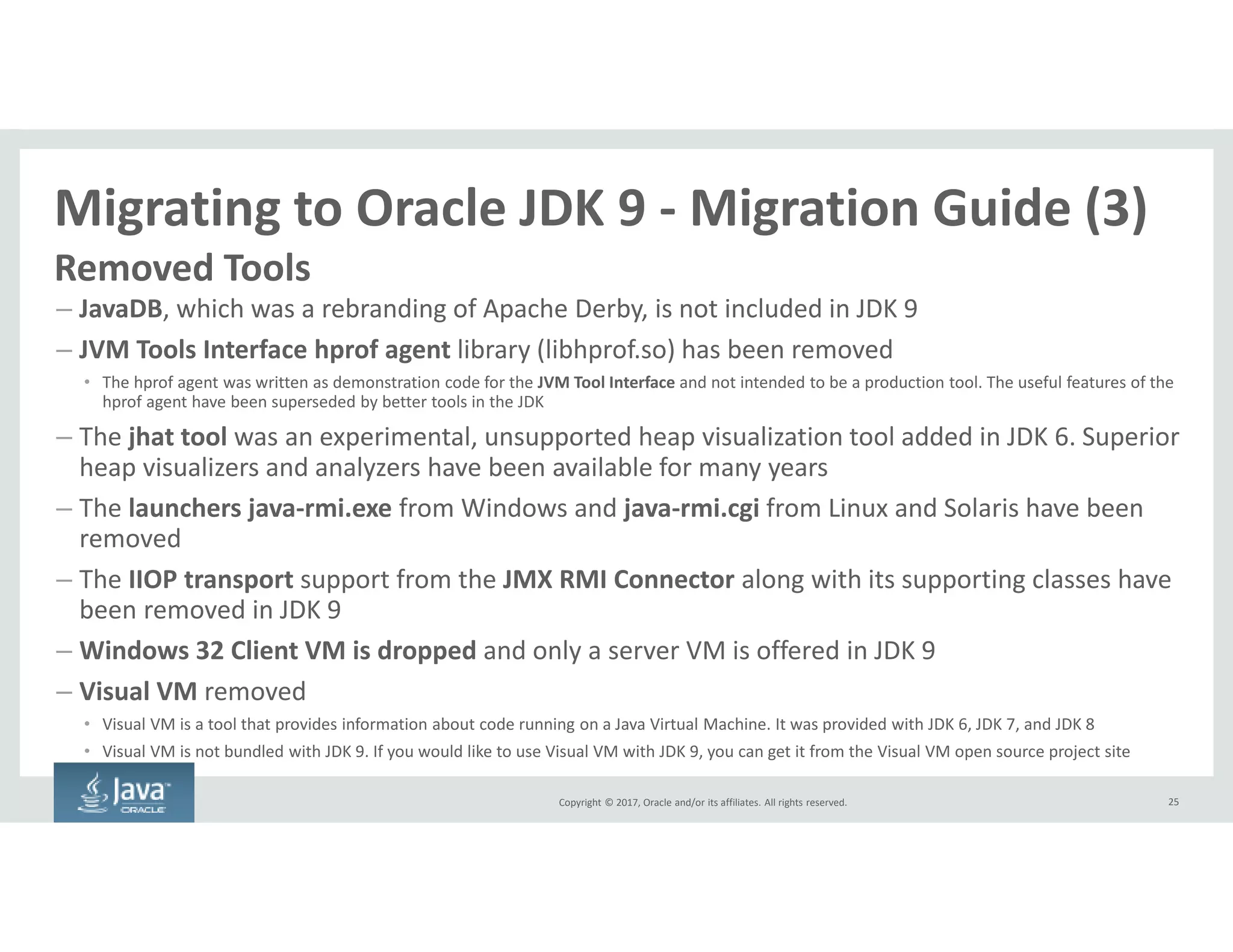

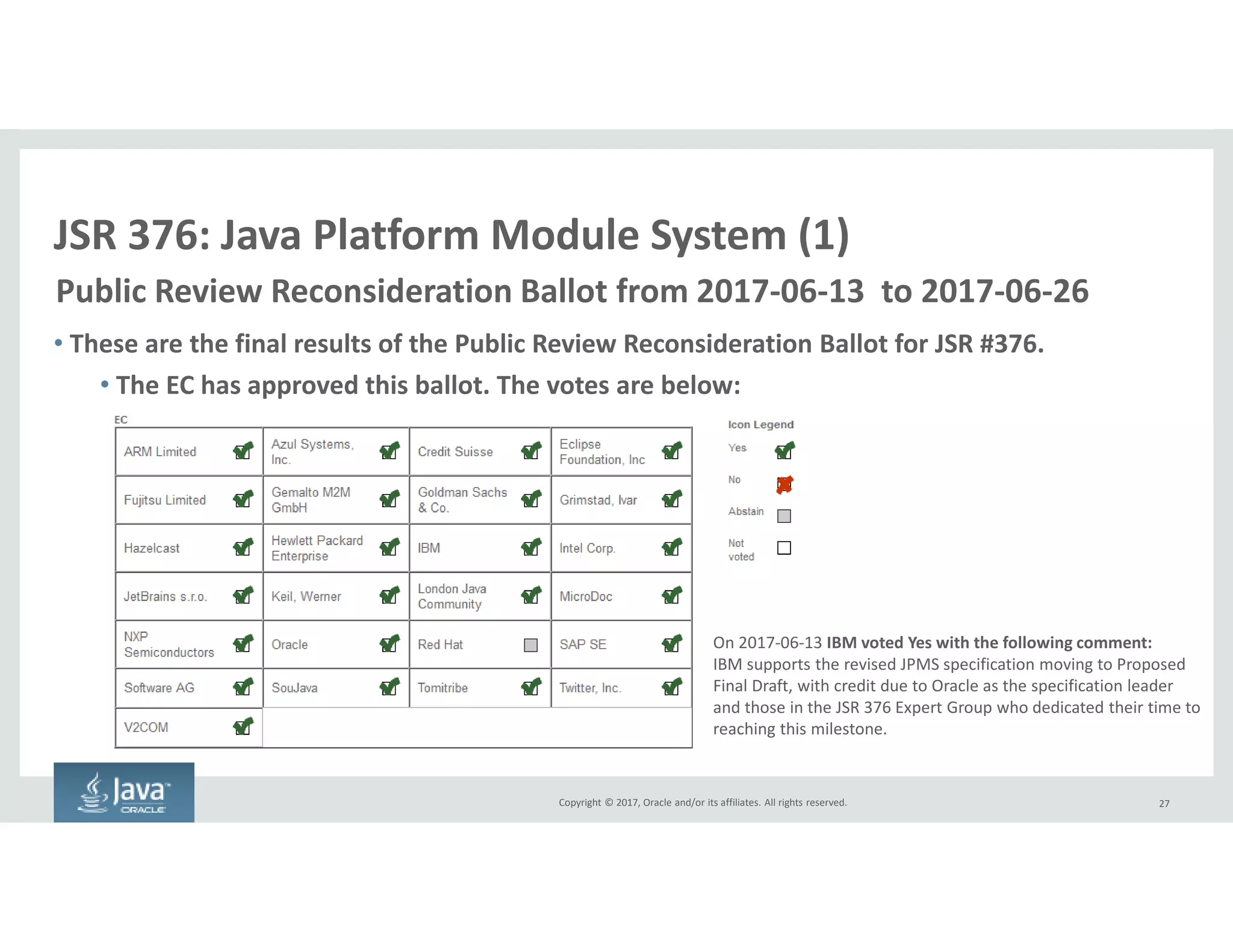

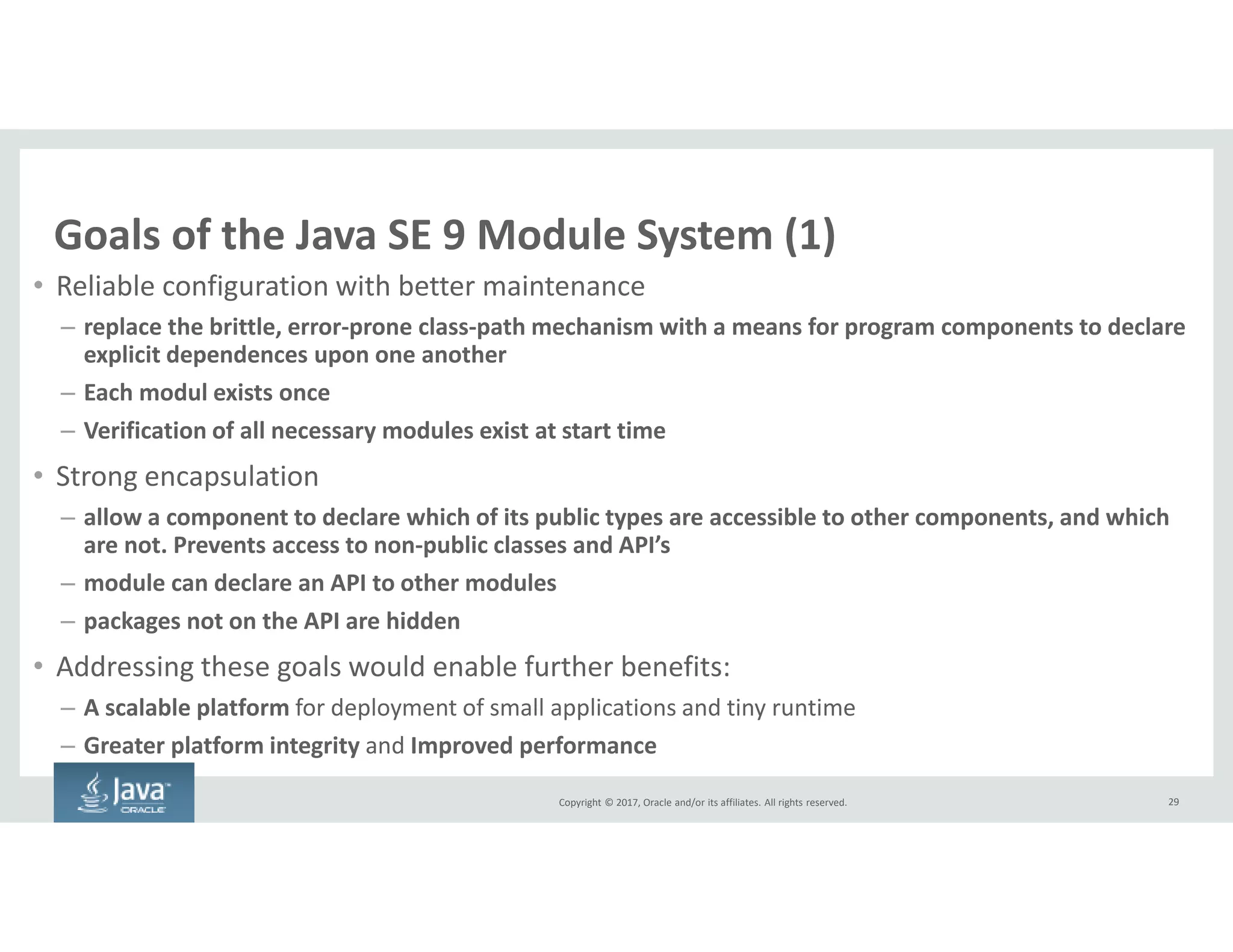


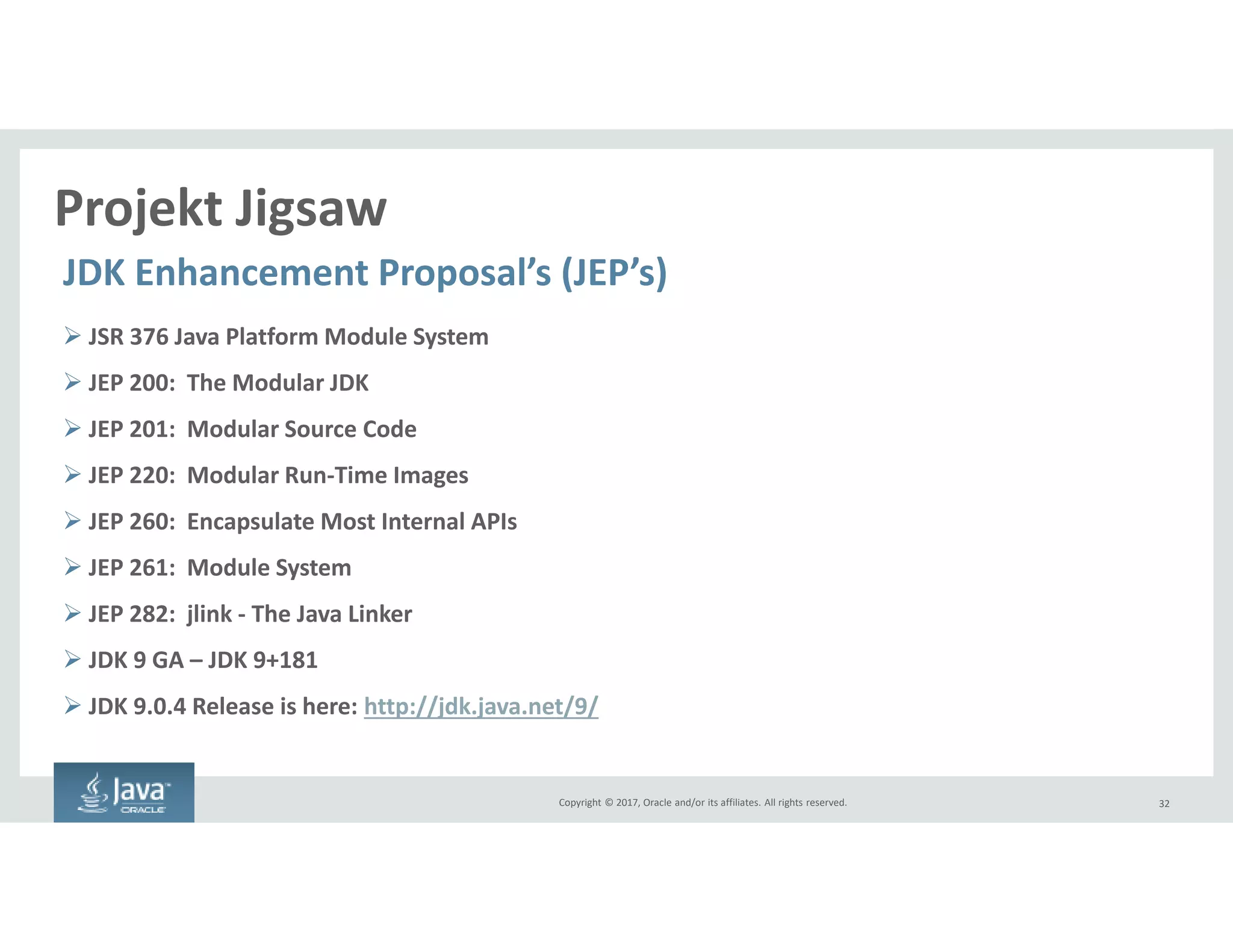
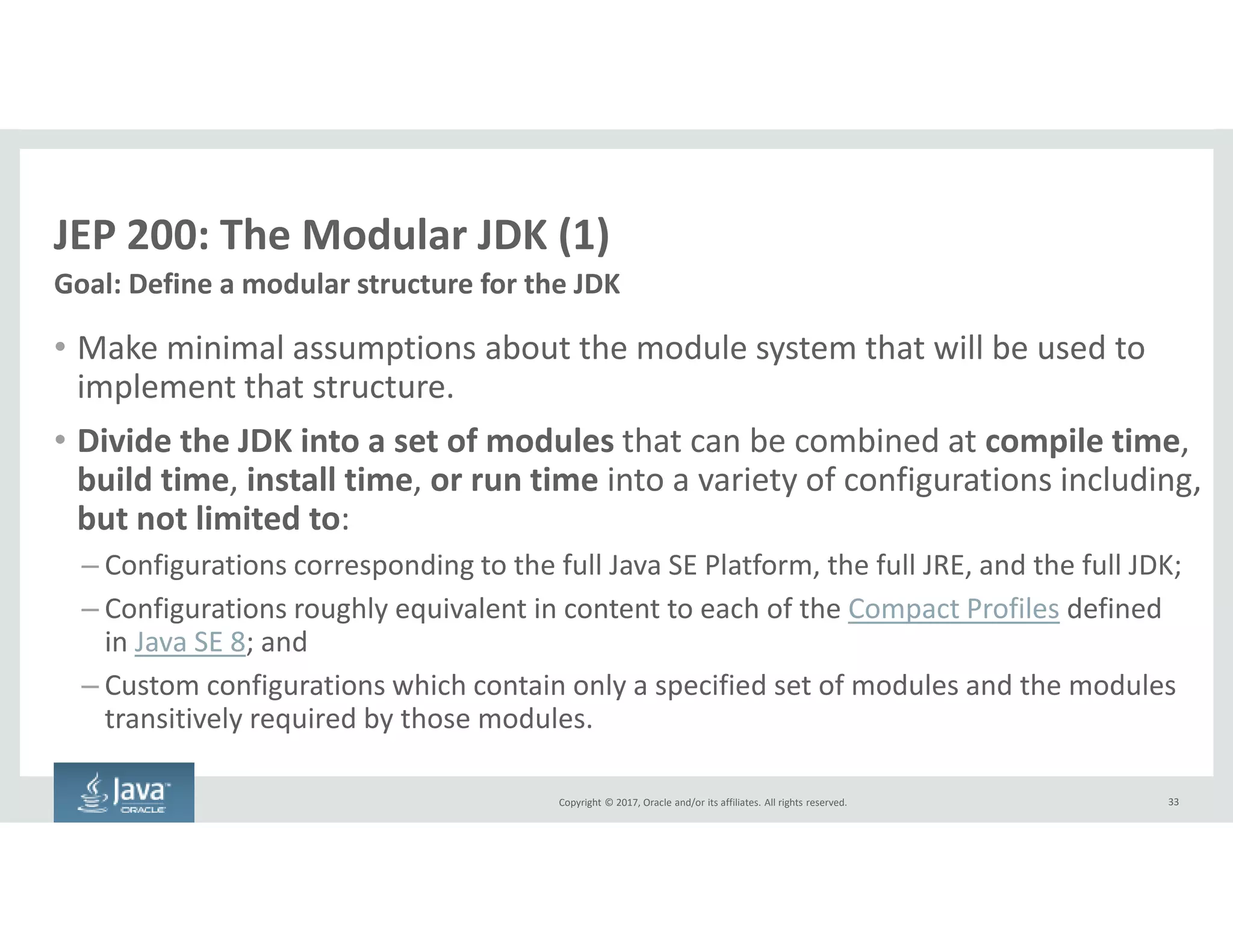

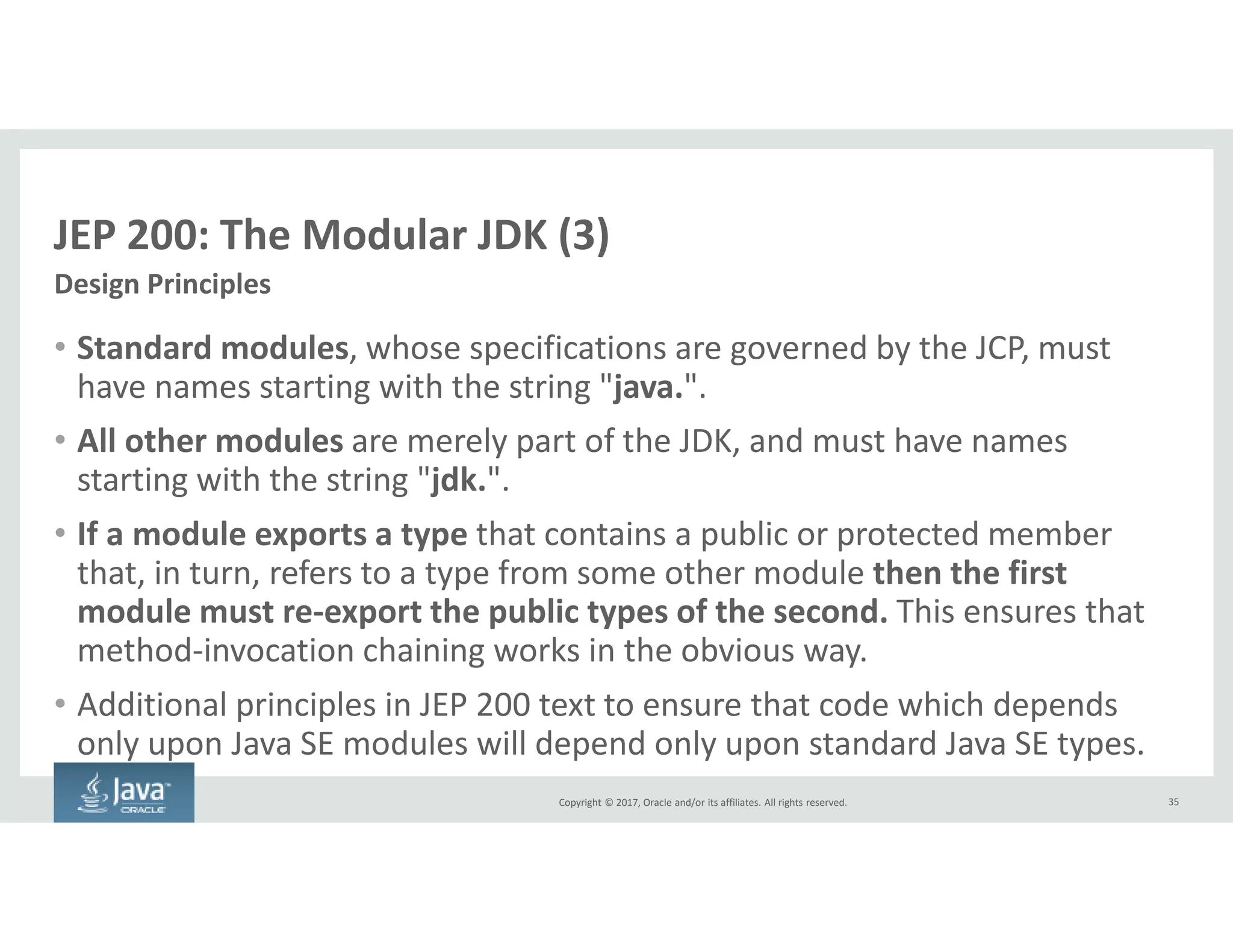
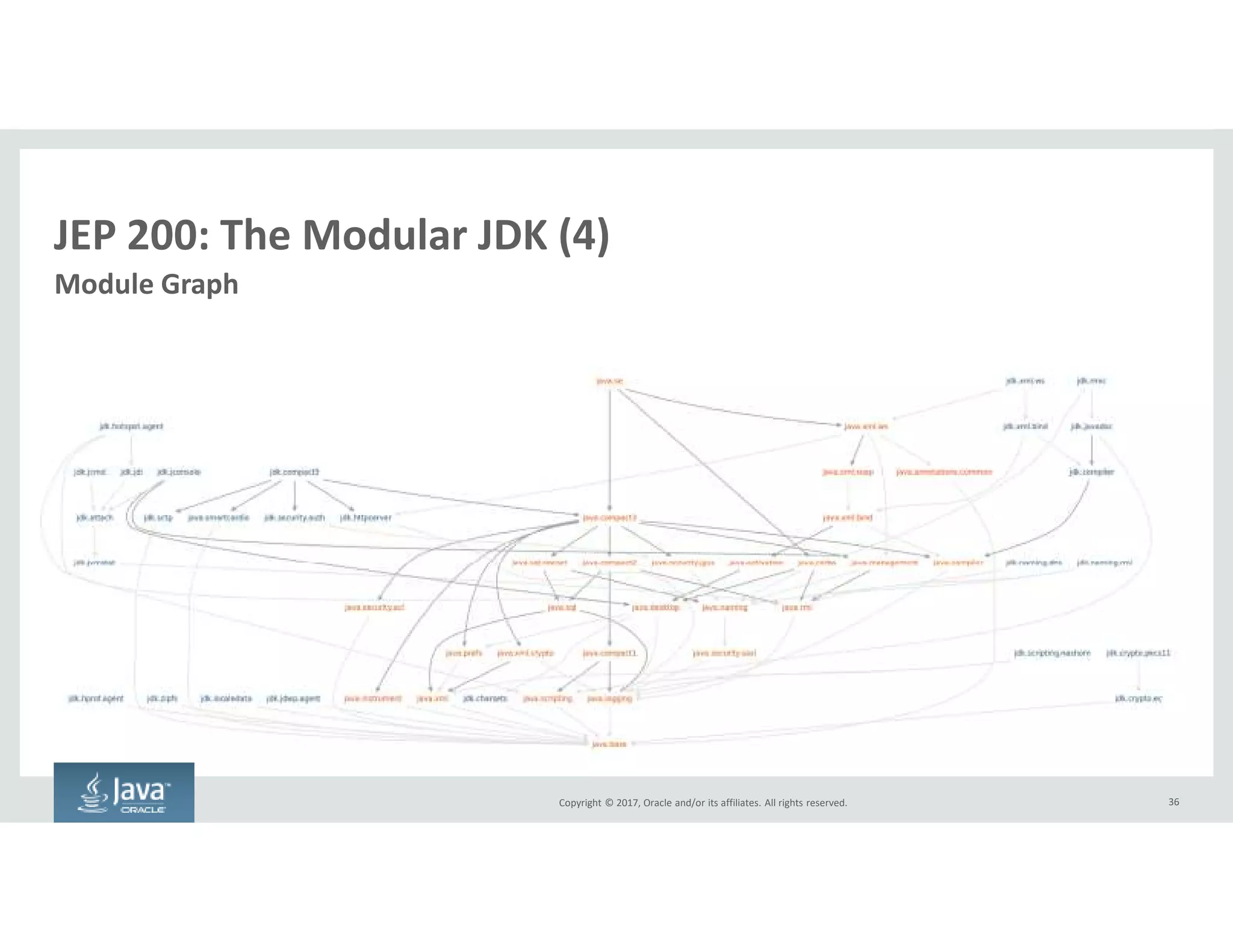
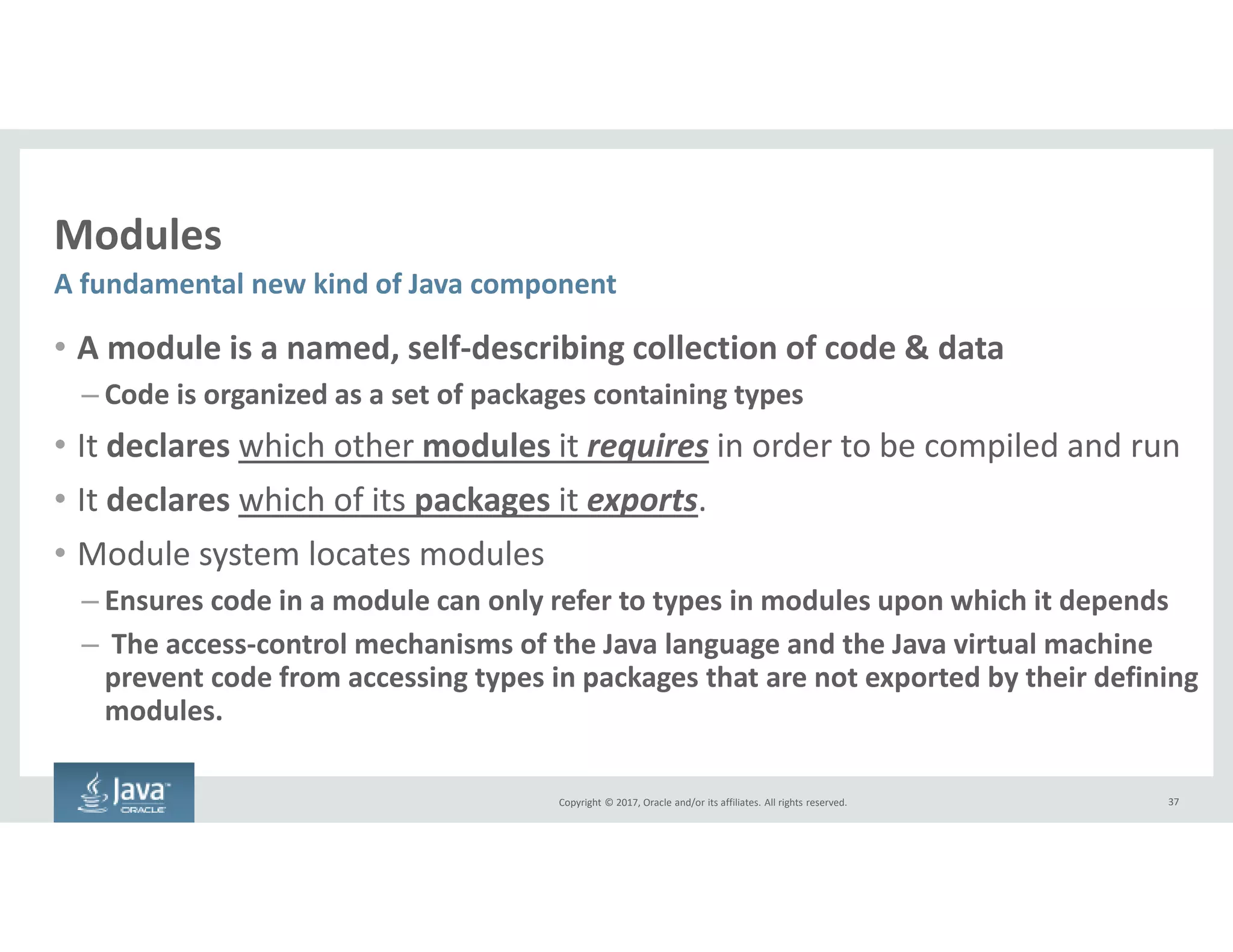
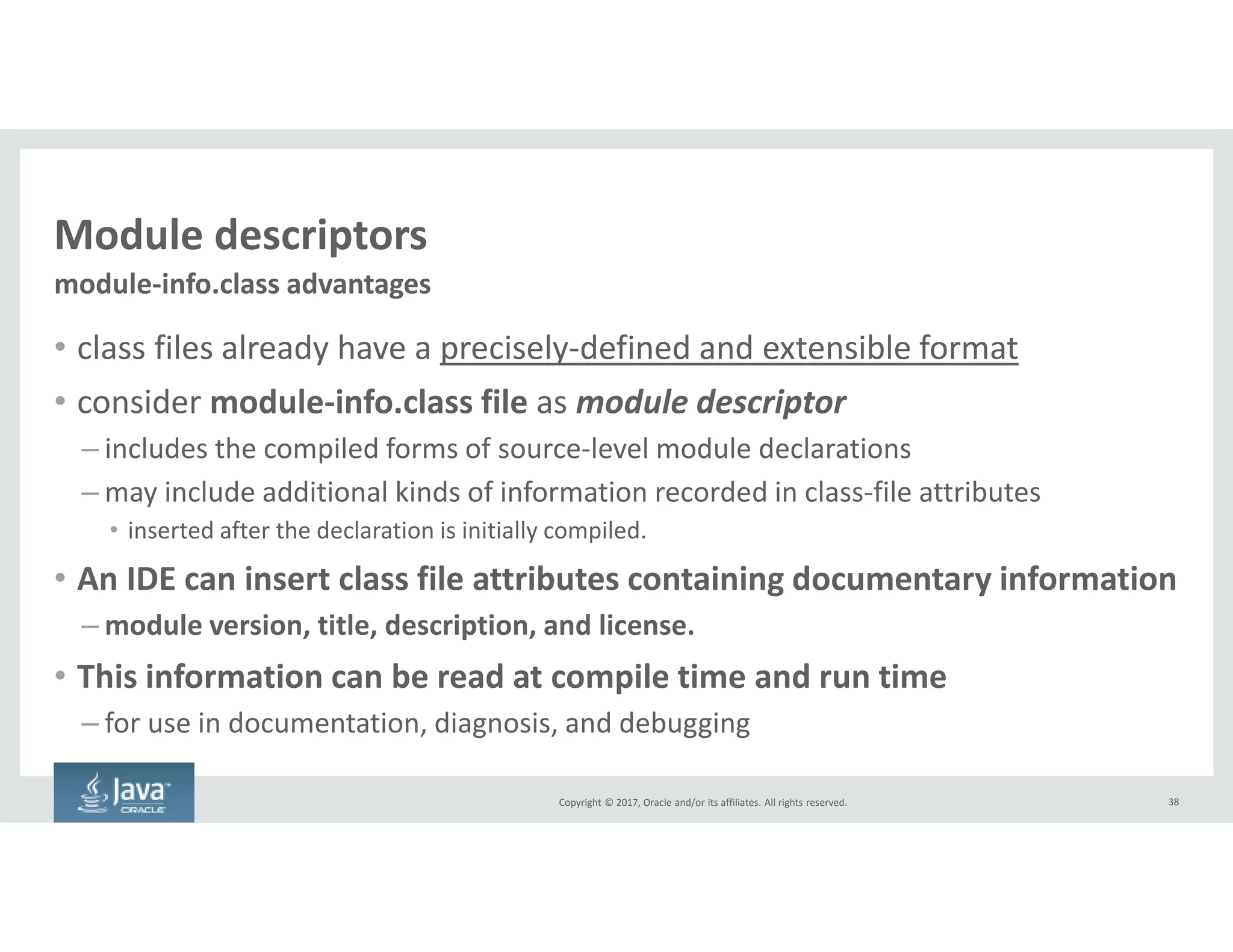
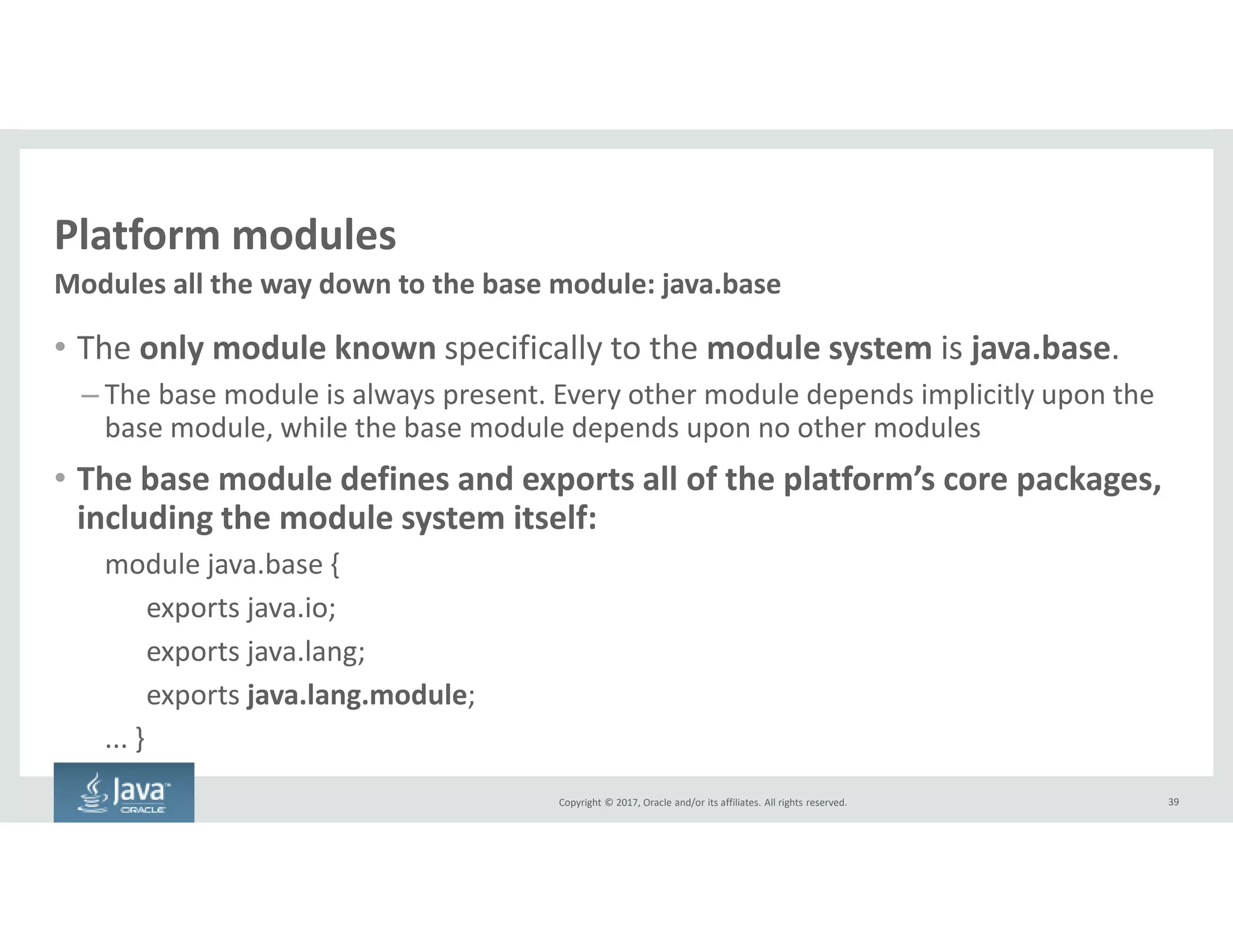
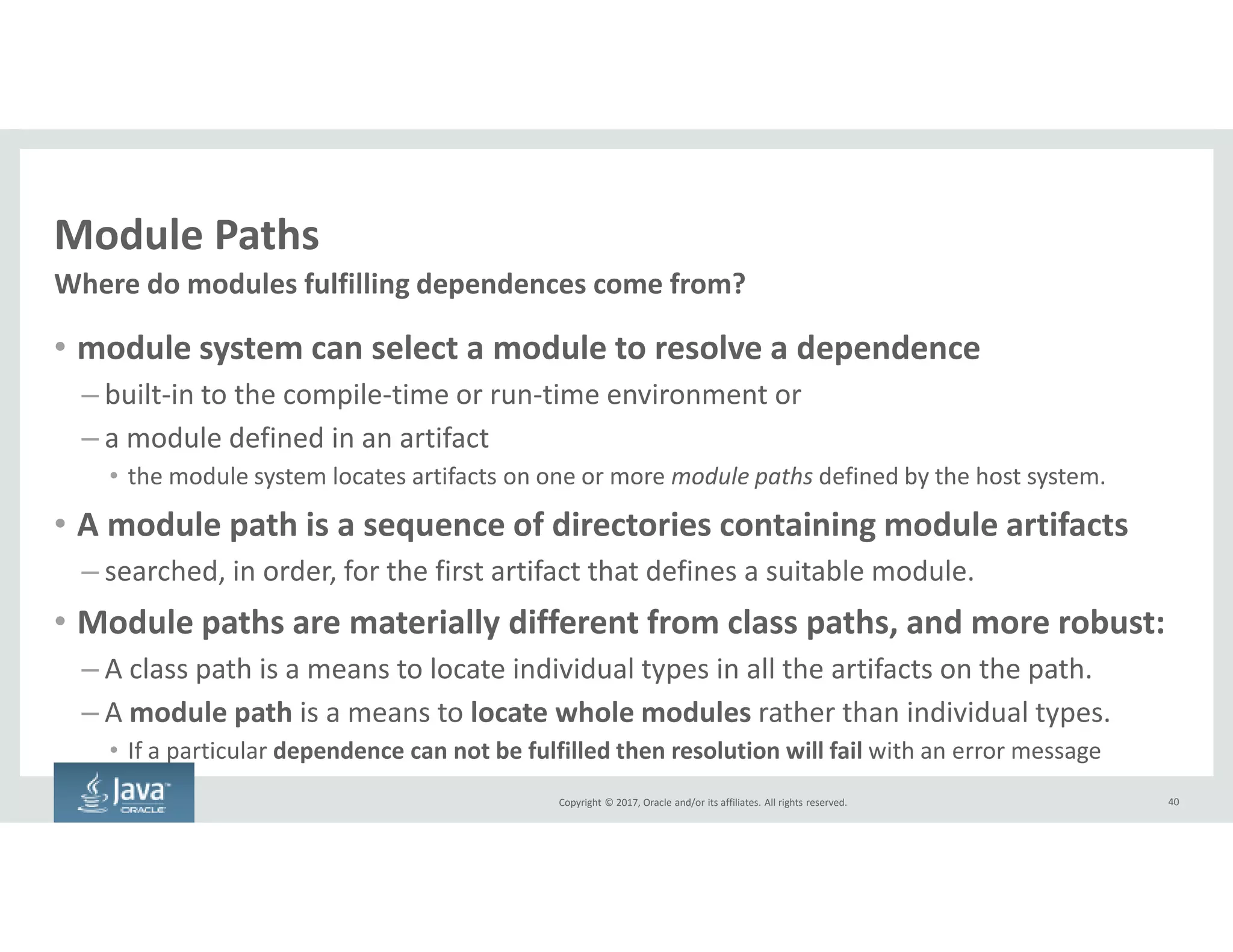
![Copyright © 2017, Oracle and/or its affiliates. All rights reserved.
Packages and Modules - Module Declarations
41
ModuleDirective:
requires {RequiresModifier} ModuleName ;
exports PackageName [to ModuleName {, ModuleName}] ;
opens PackageName [to ModuleName {, ModuleName}] ;
uses TypeName ;
provides TypeName with TypeName {, TypeName} ;
Java Language Specification, Java SE 9 Edition](https://image.slidesharecdn.com/oraclejdk9javaplatformmodulesystem-180207191440/75/JDK-9-Java-Platform-Module-System-41-2048.jpg)
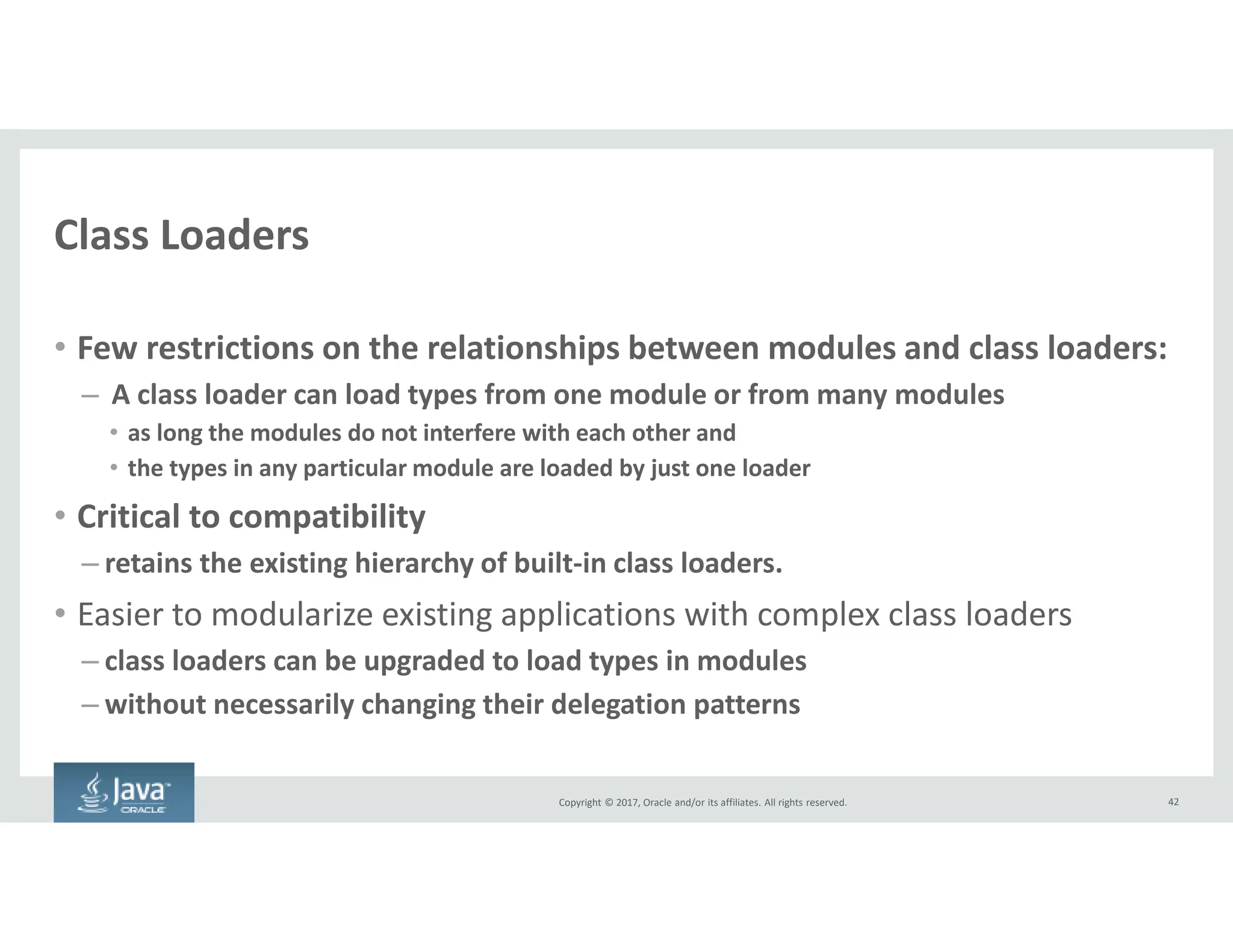
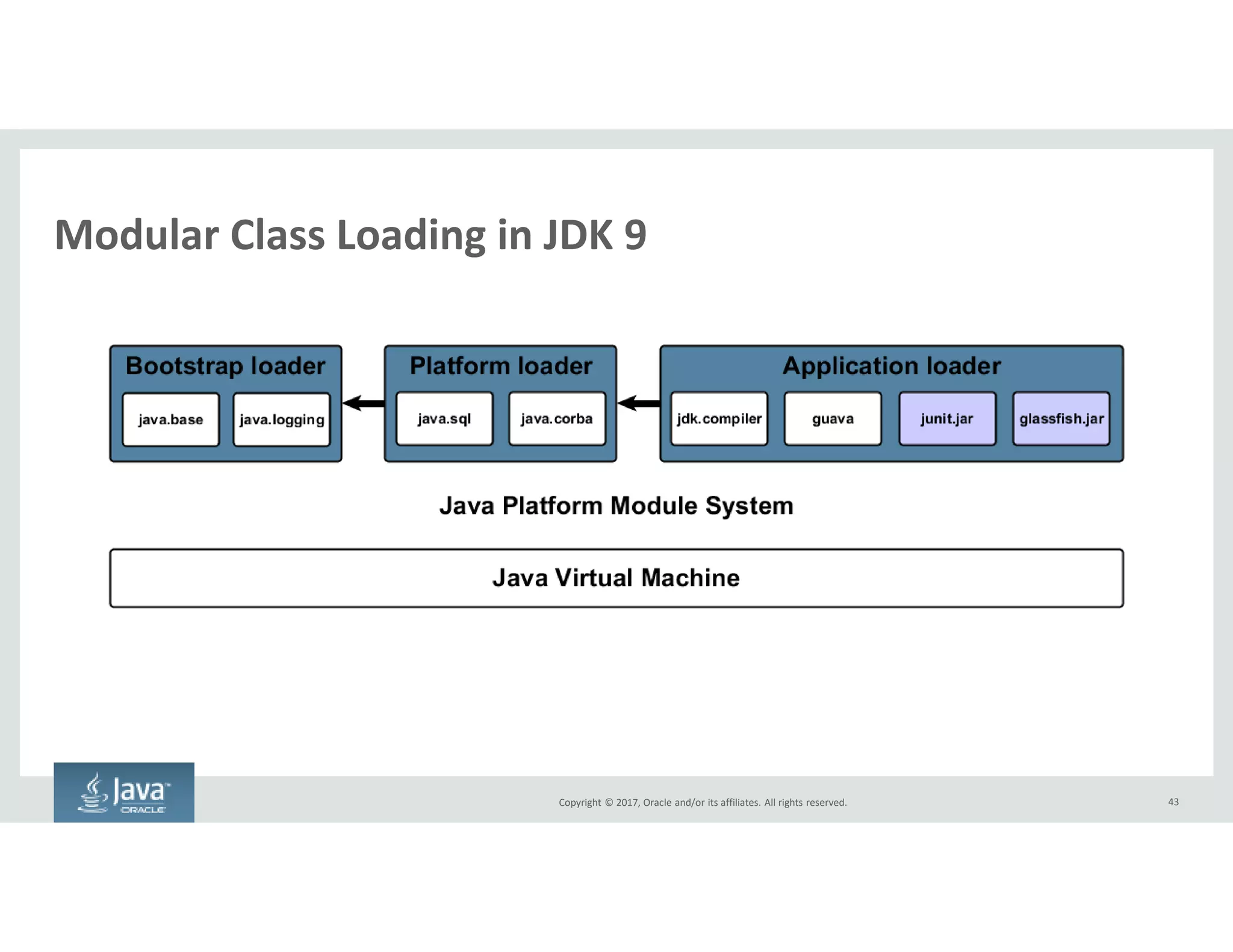
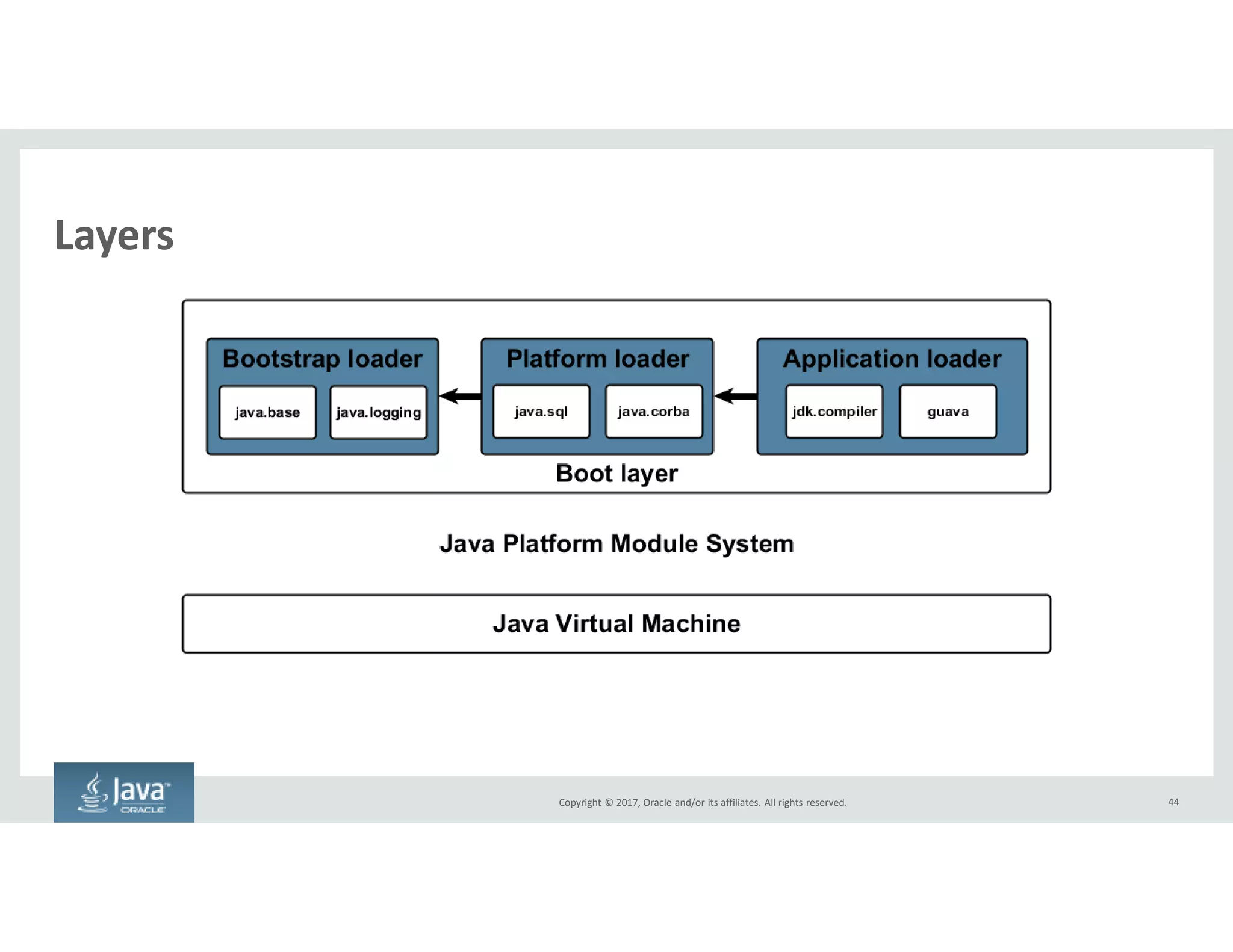
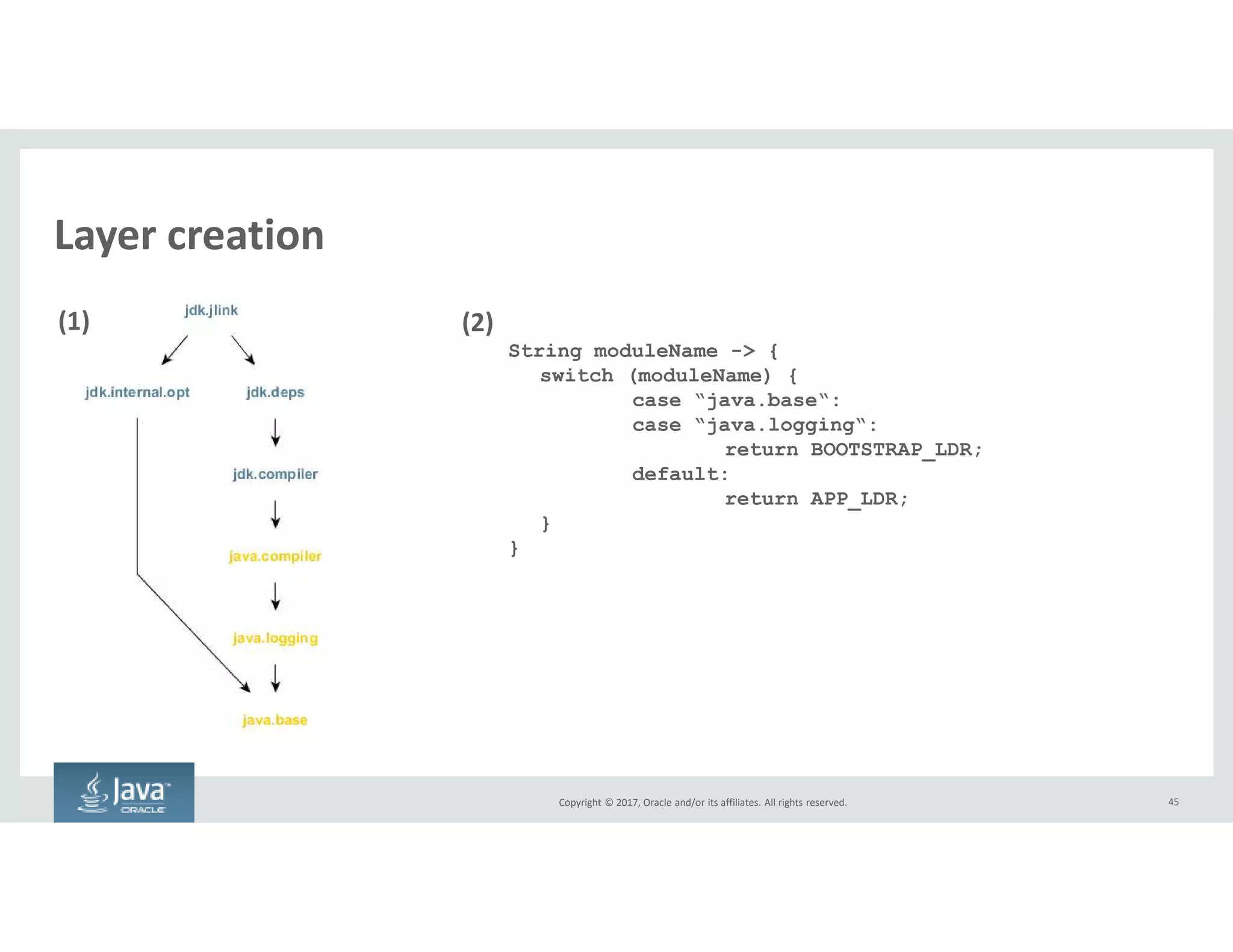
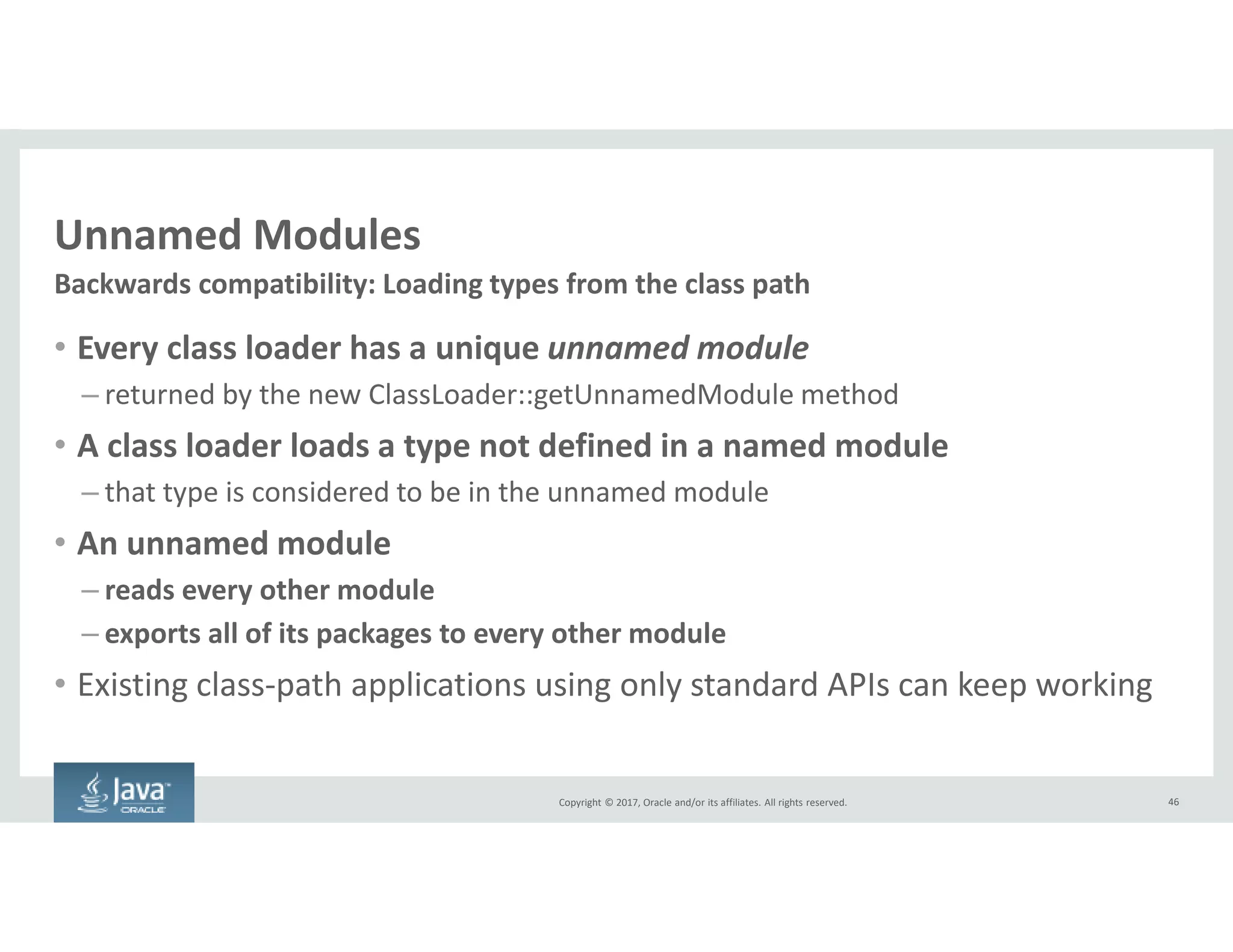
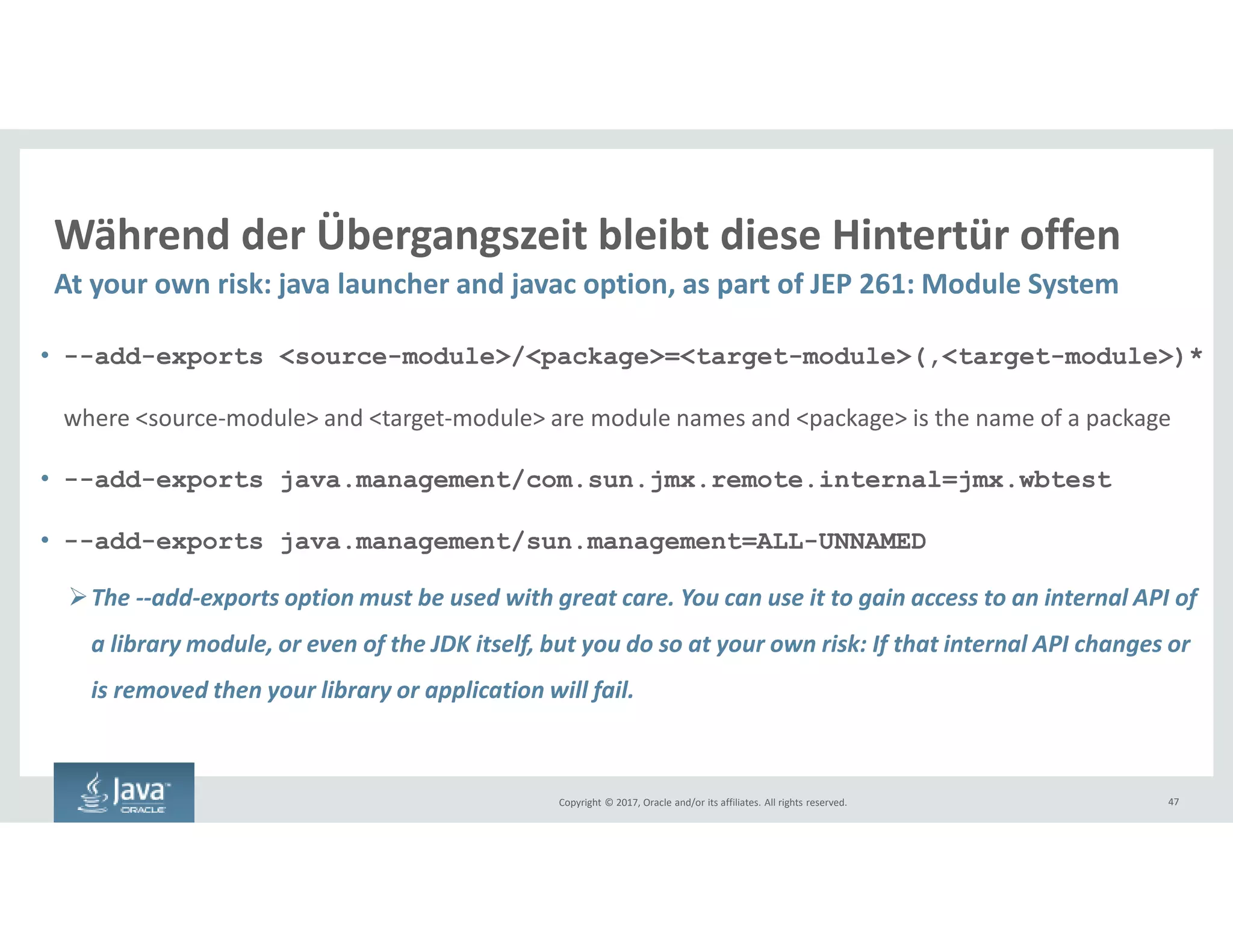

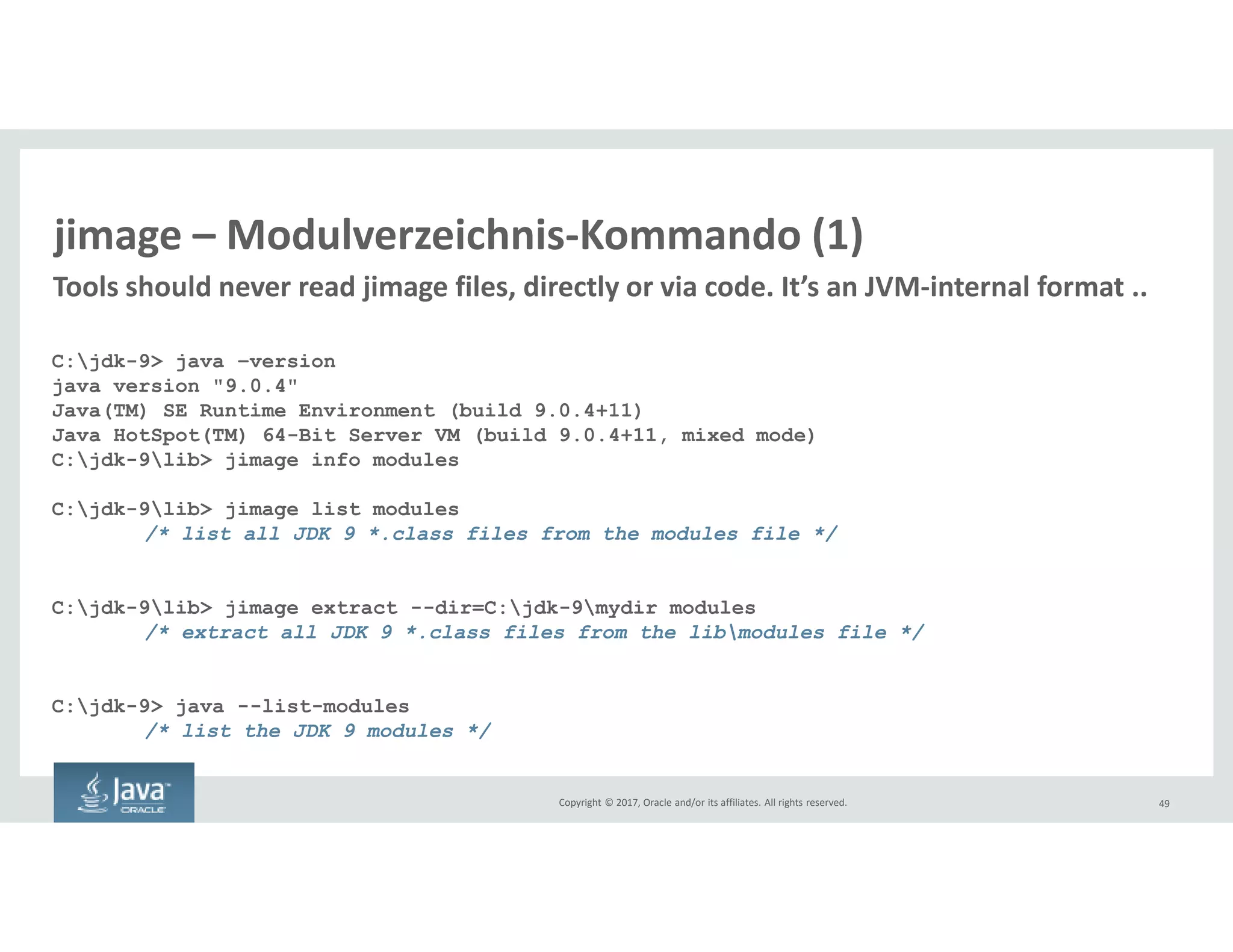
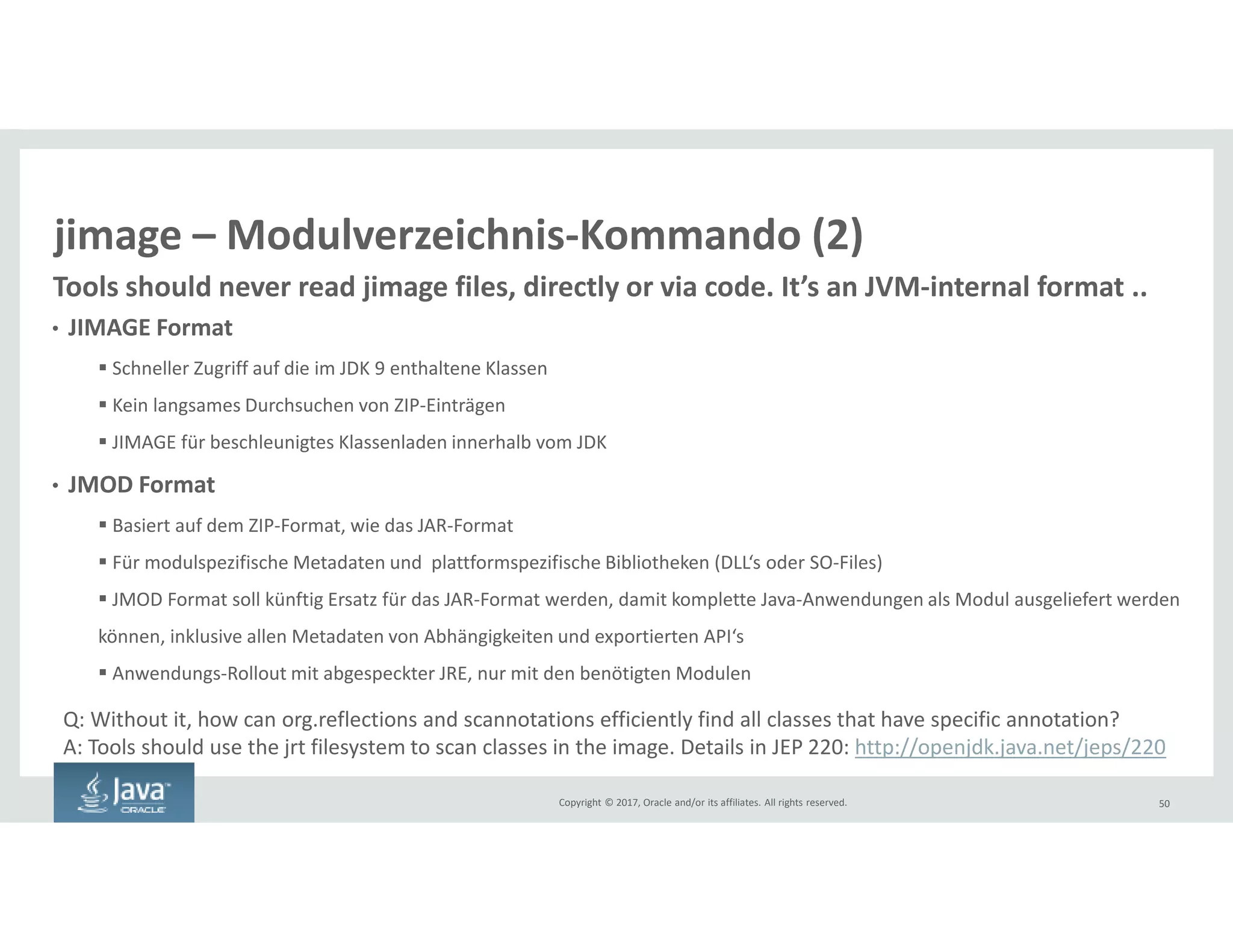
![Copyright © 2017, Oracle and/or its affiliates. All rights reserved. 51
jdeps - Java-Class-Dependency-Analyzer
C:mlib> jdeps -profile com.greetings.jar
com.greetings
[file:///C:/mlib/com.greetings.jar]
requires mandated java.base (@9-ea)
com.greetings -> java.base (compact1)
com.greetings -> java.io compact1
com.greetings -> java.lang compact1
C:mlib> jdeps -v com.greetings.jar
com.greetings
[file:///C:/mlib/com.greetings.jar]
requires mandated java.base (@9-ea)
com.greetings -> java.base
com.greetings.Main -> java.io.PrintStream java.base
com.greetings.Main -> java.lang.Object java.base
com.greetings.Main -> java.lang.String java.base
com.greetings.Main -> java.lang.System java. base](https://image.slidesharecdn.com/oraclejdk9javaplatformmodulesystem-180207191440/75/JDK-9-Java-Platform-Module-System-51-2048.jpg)
